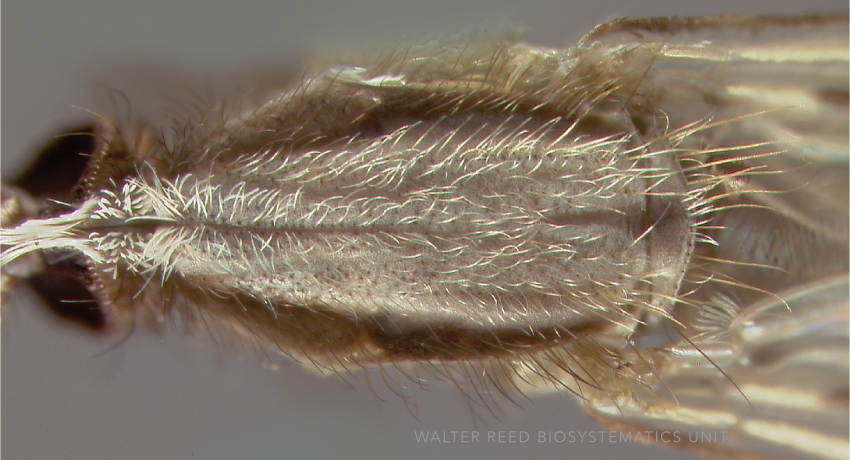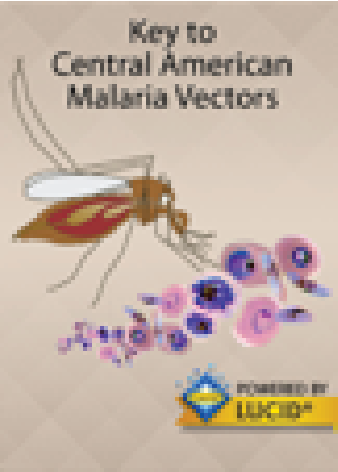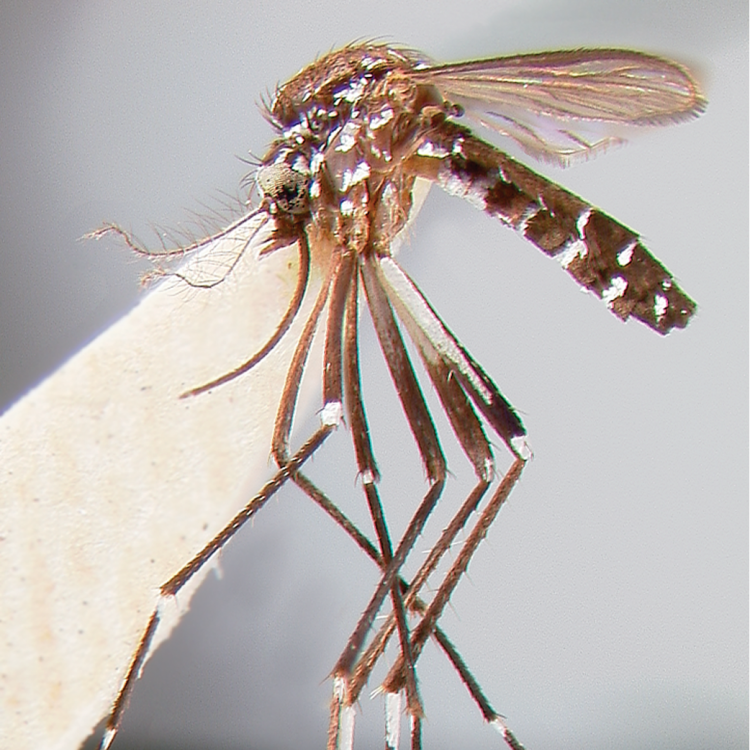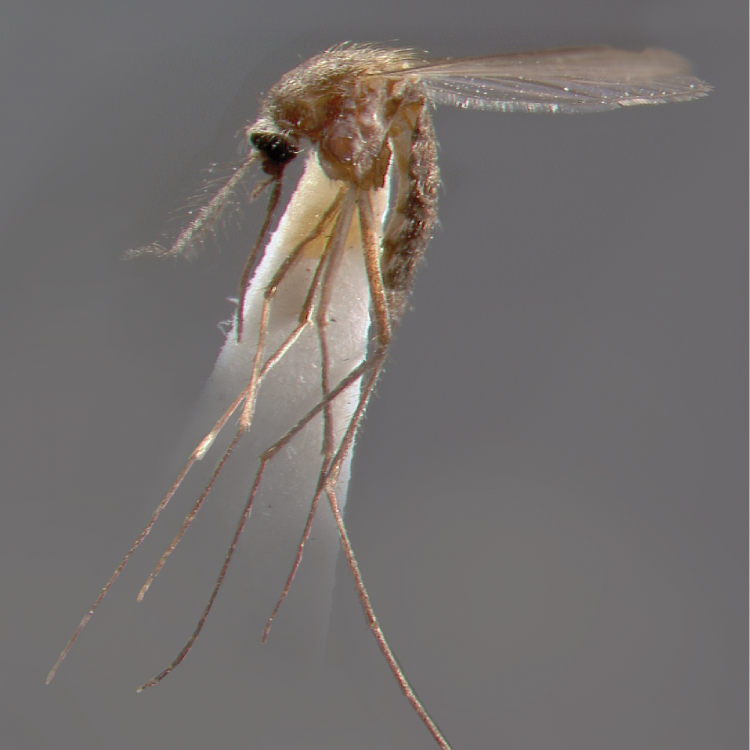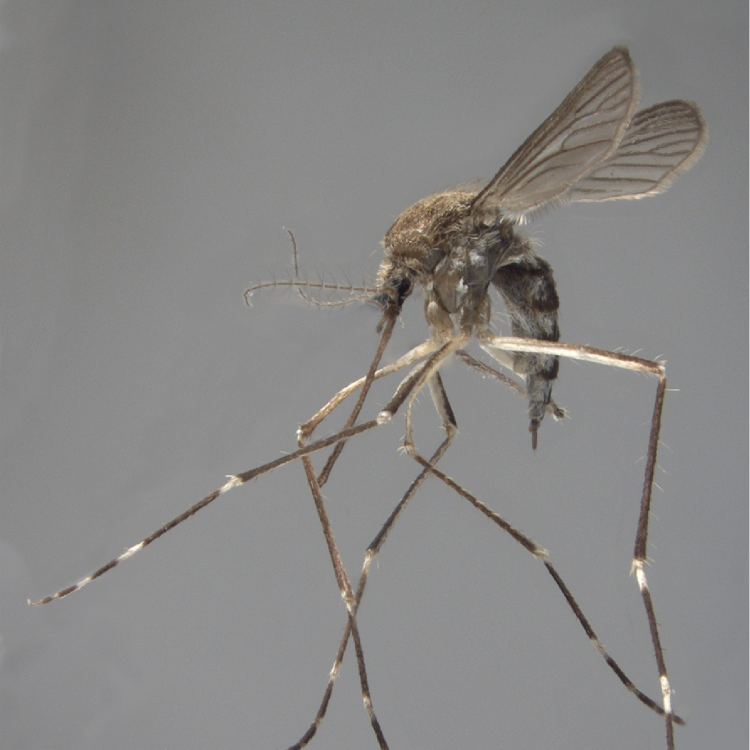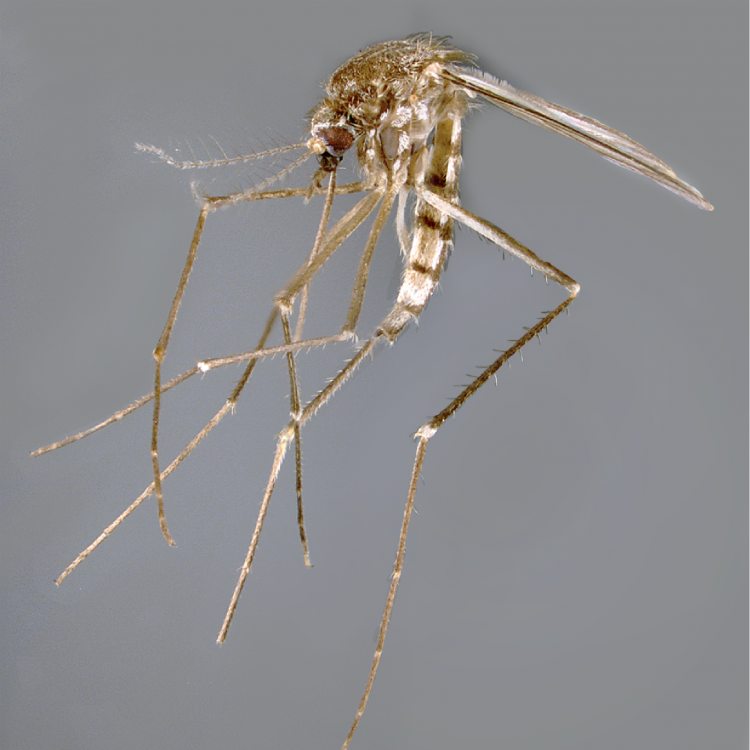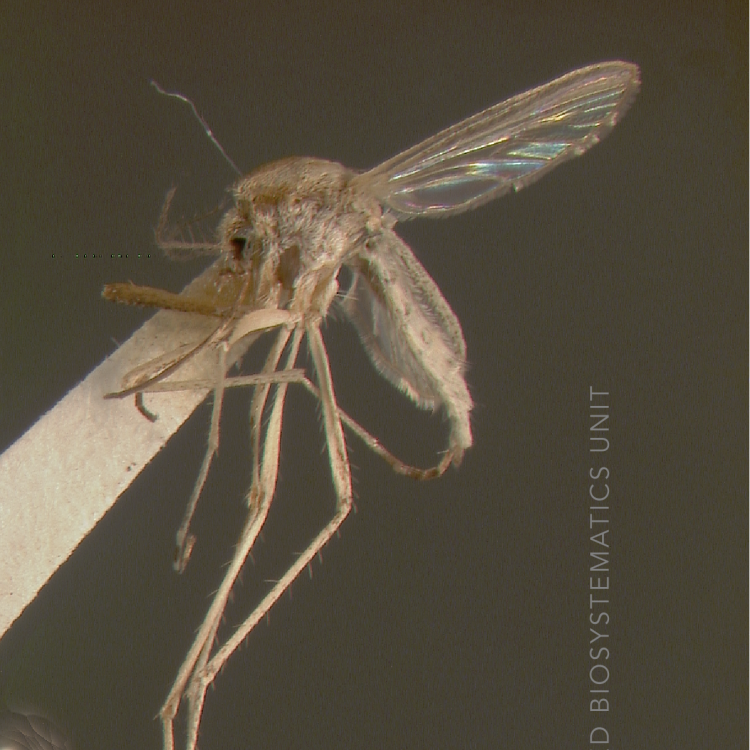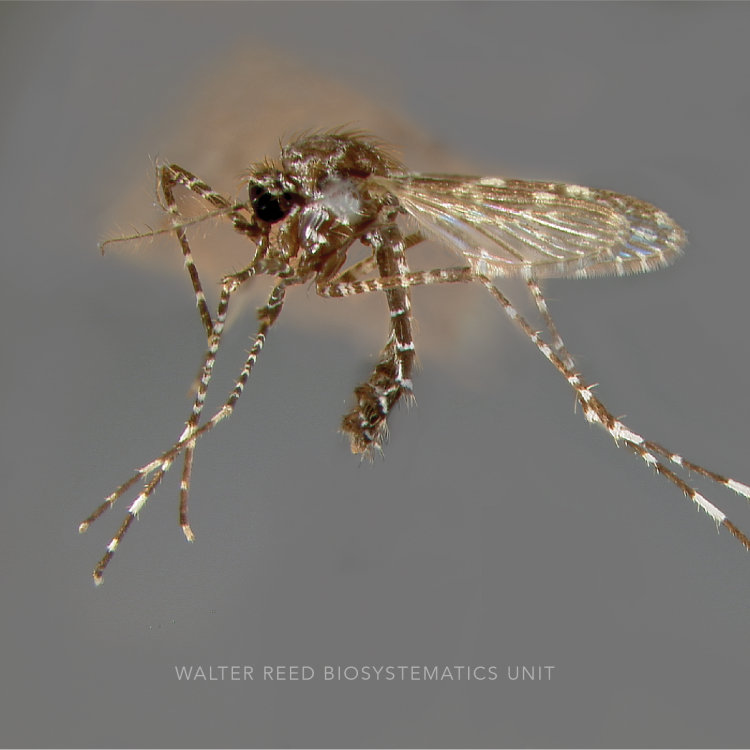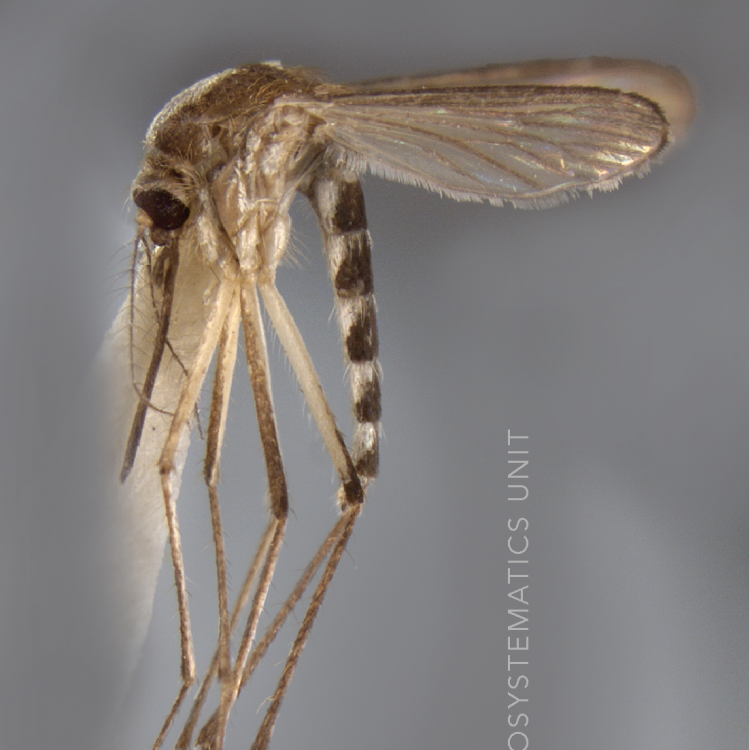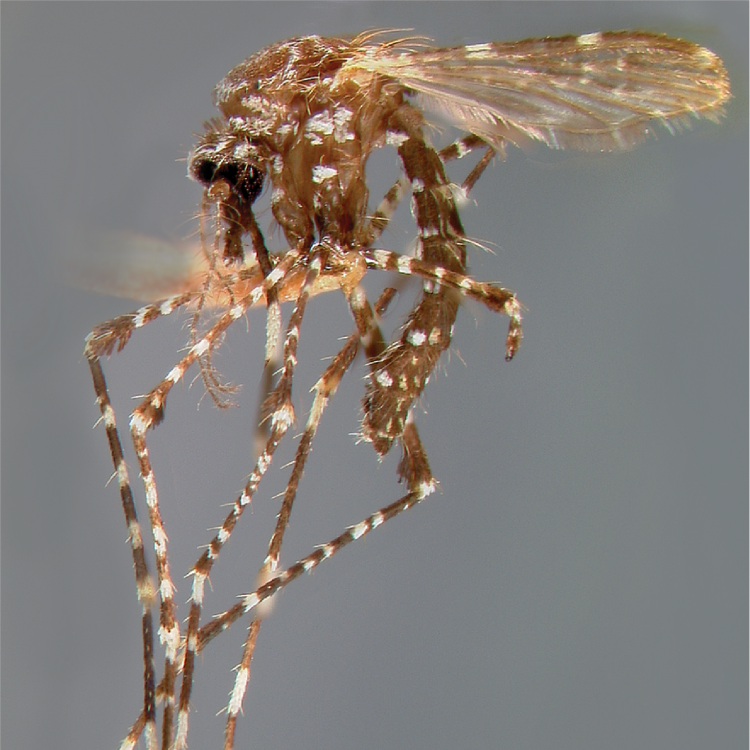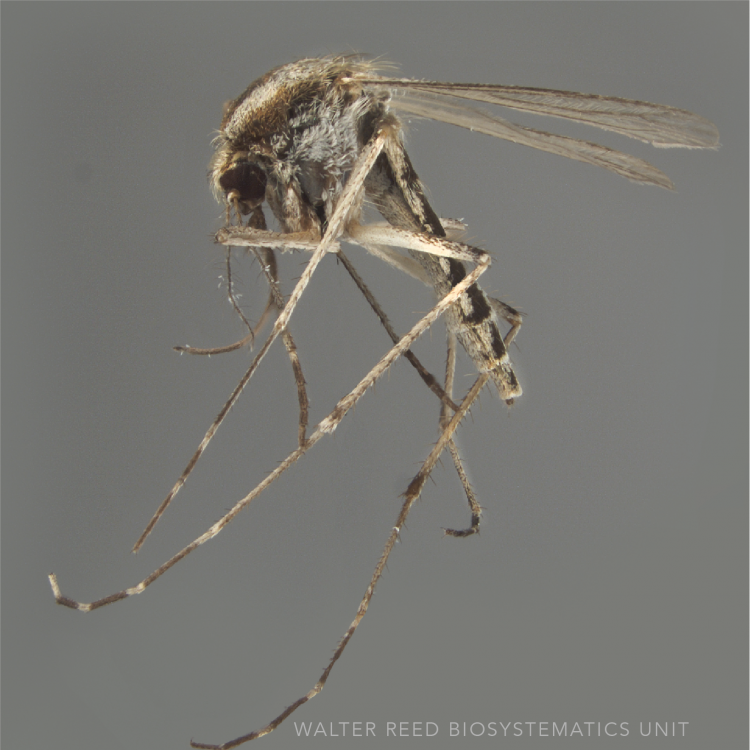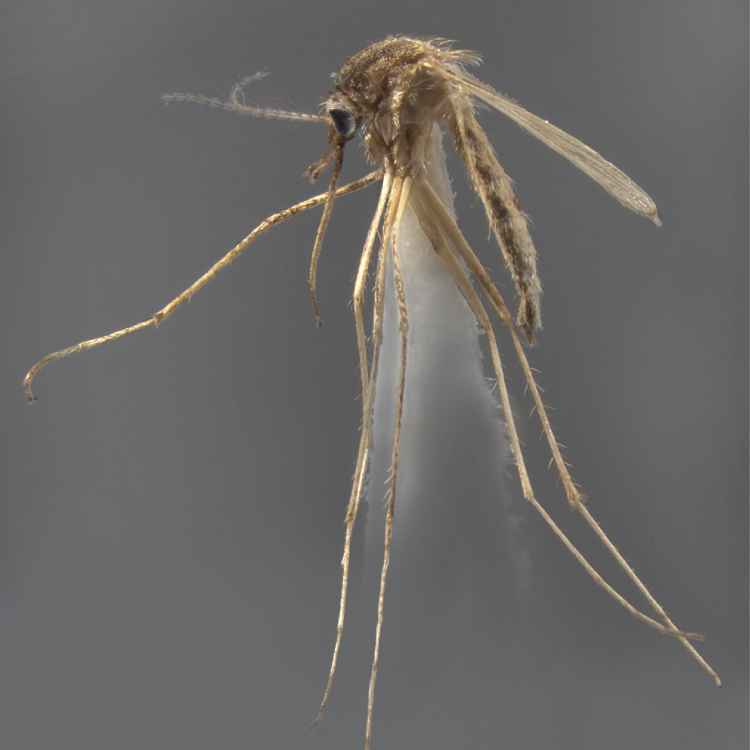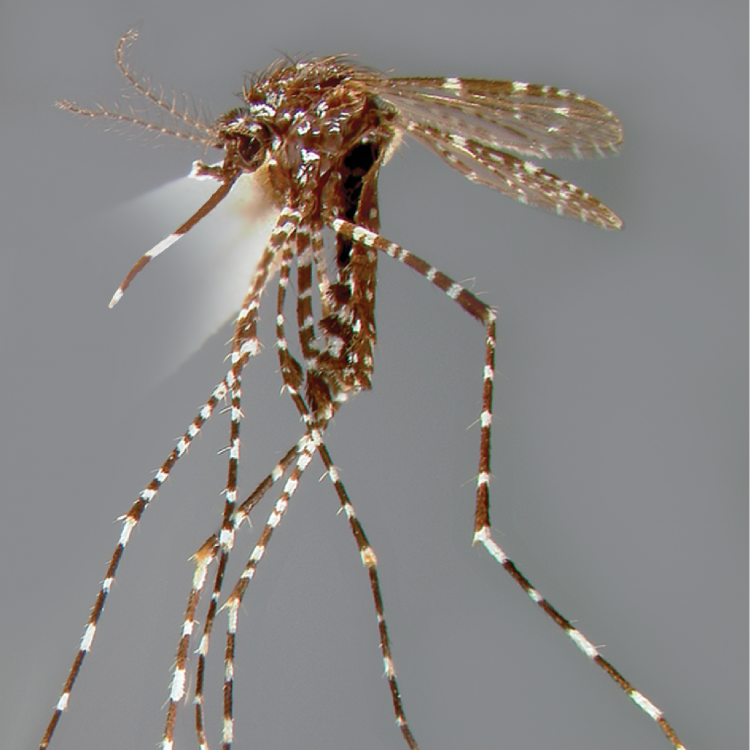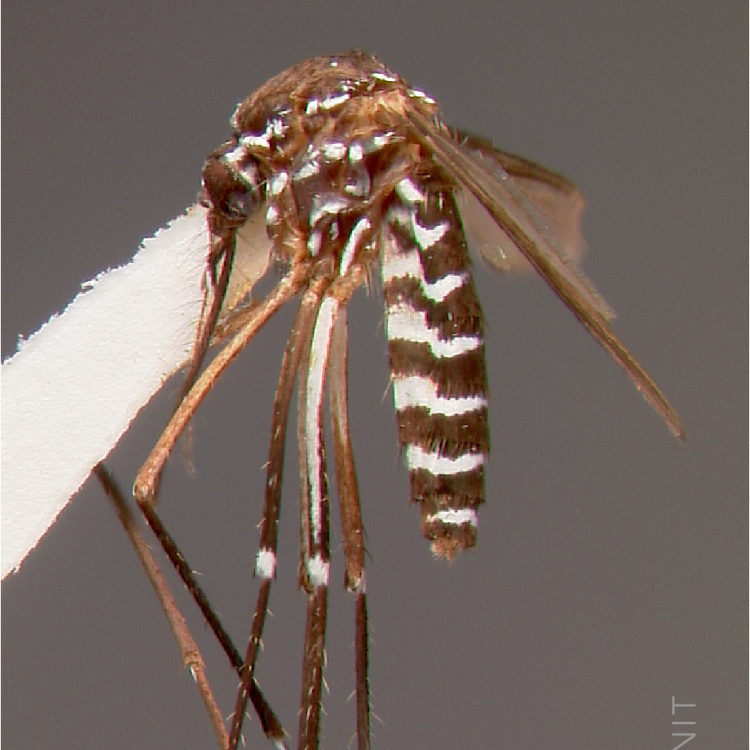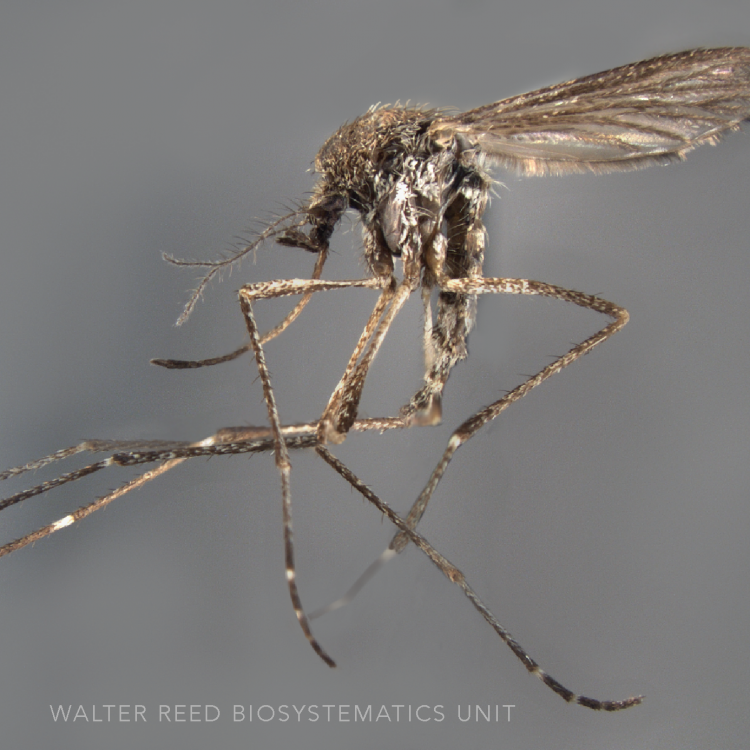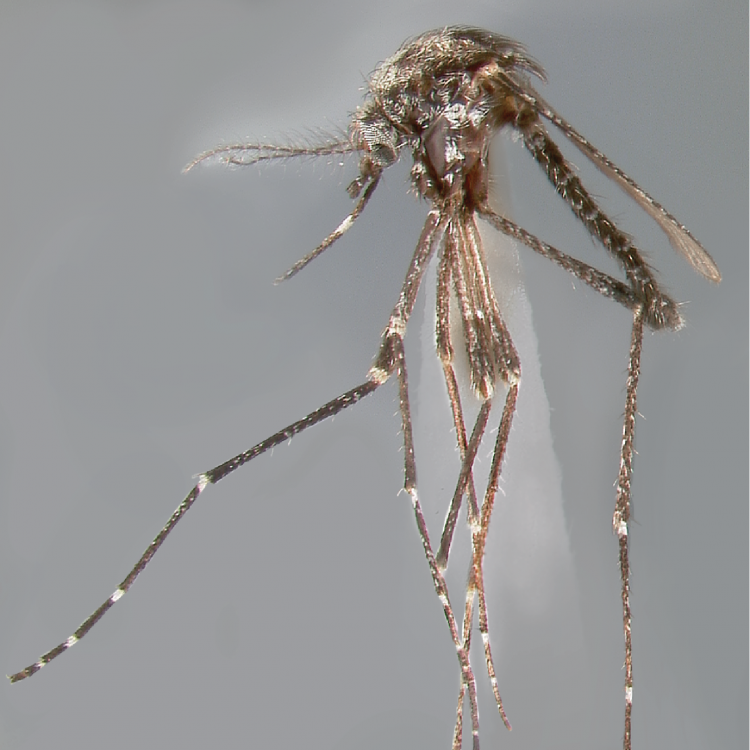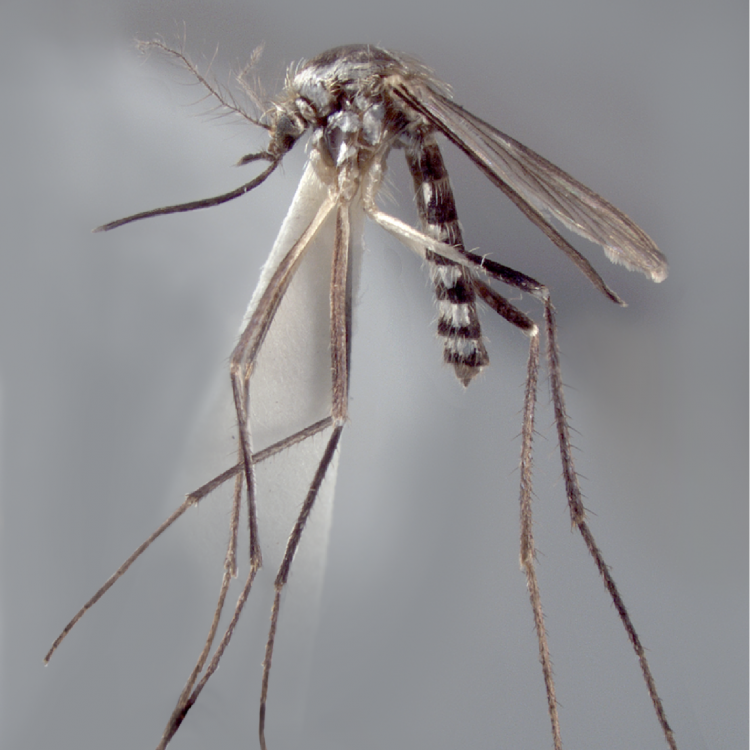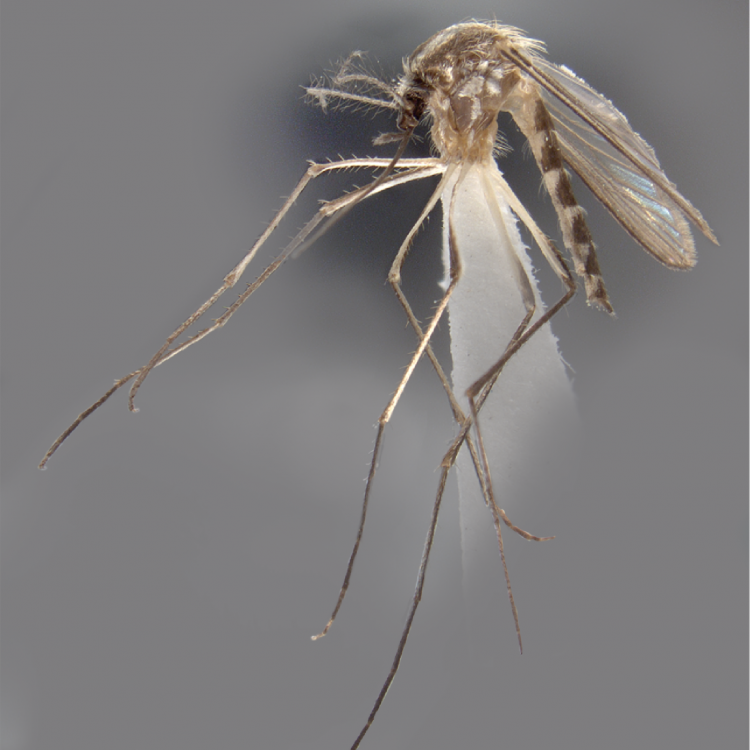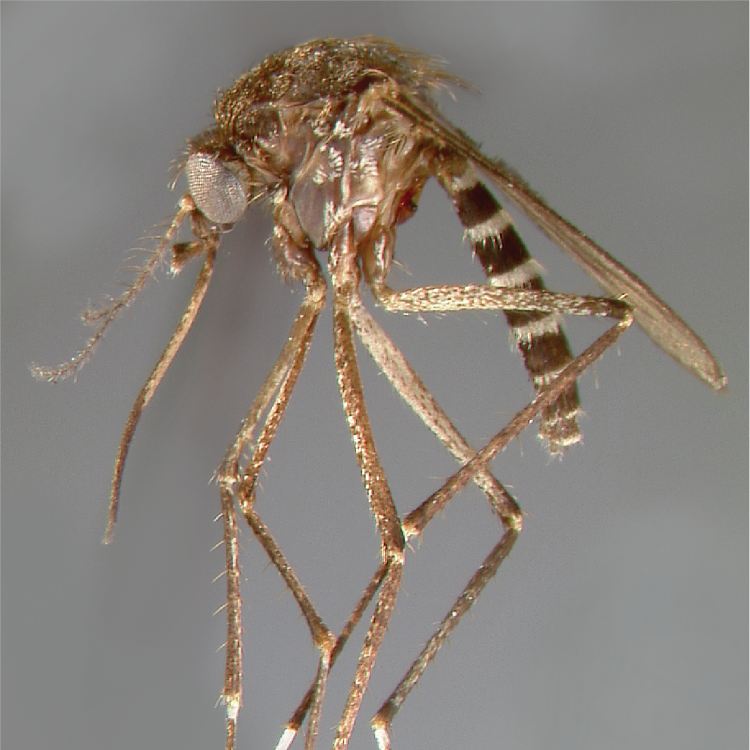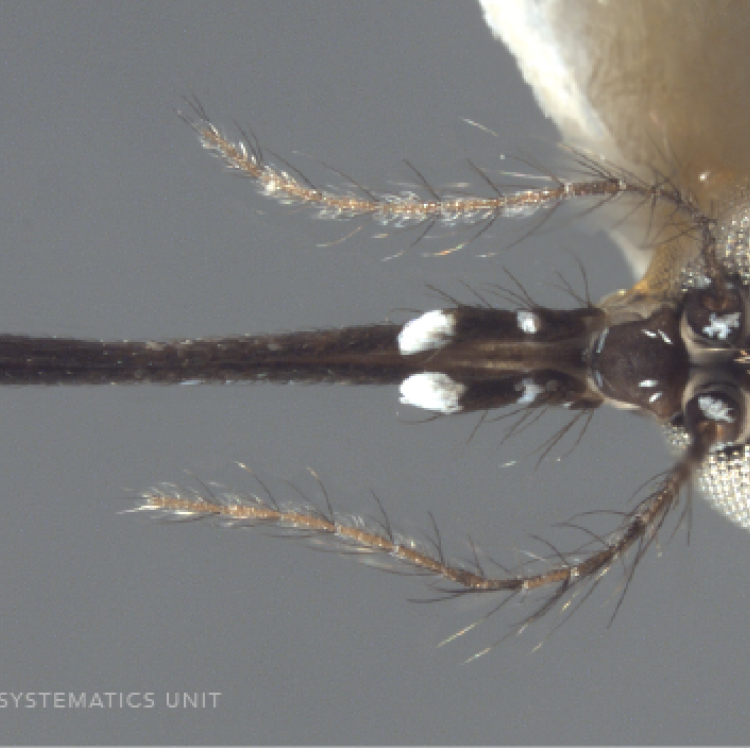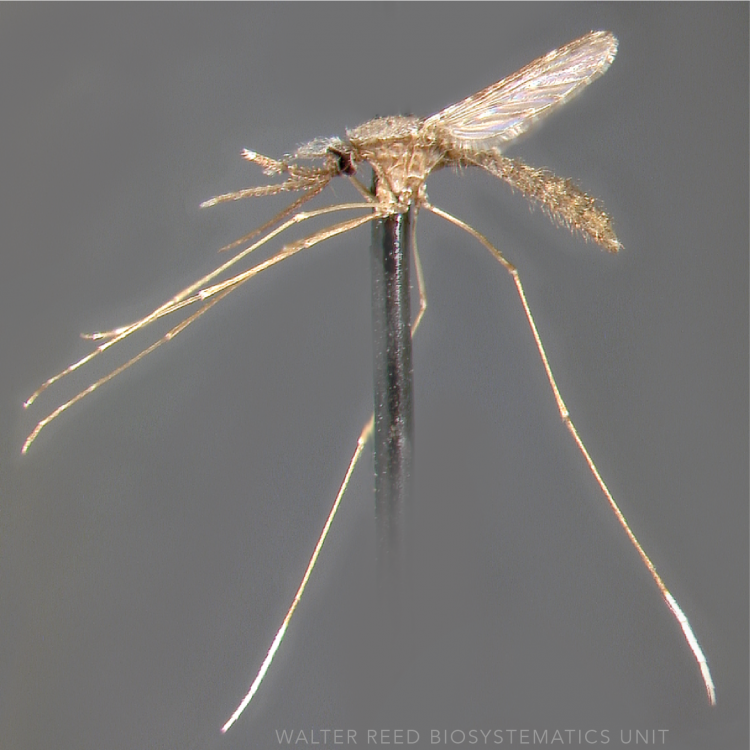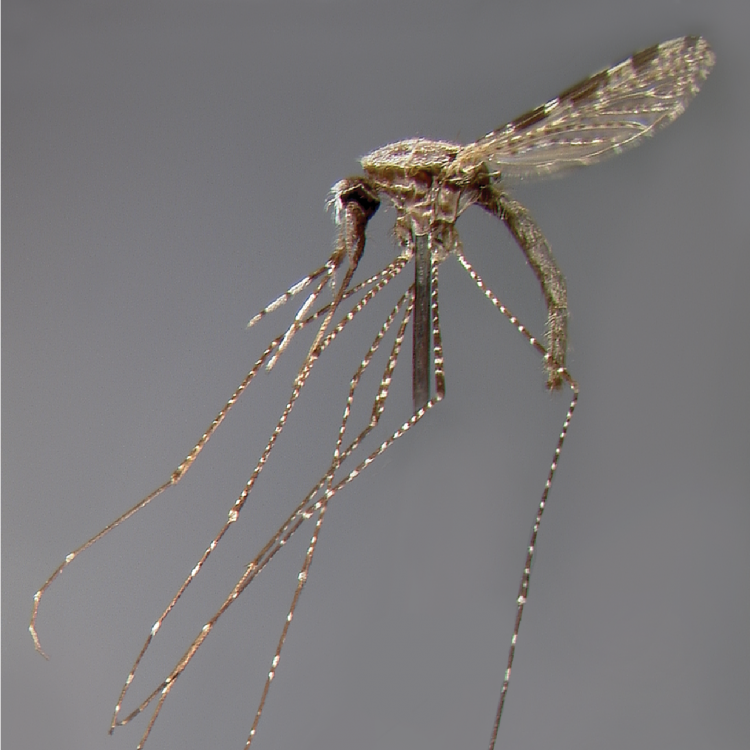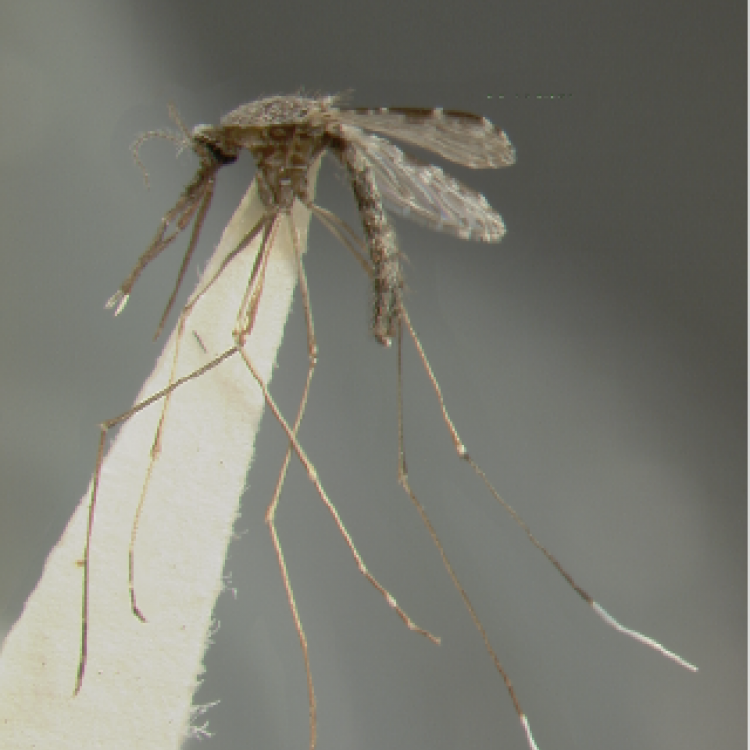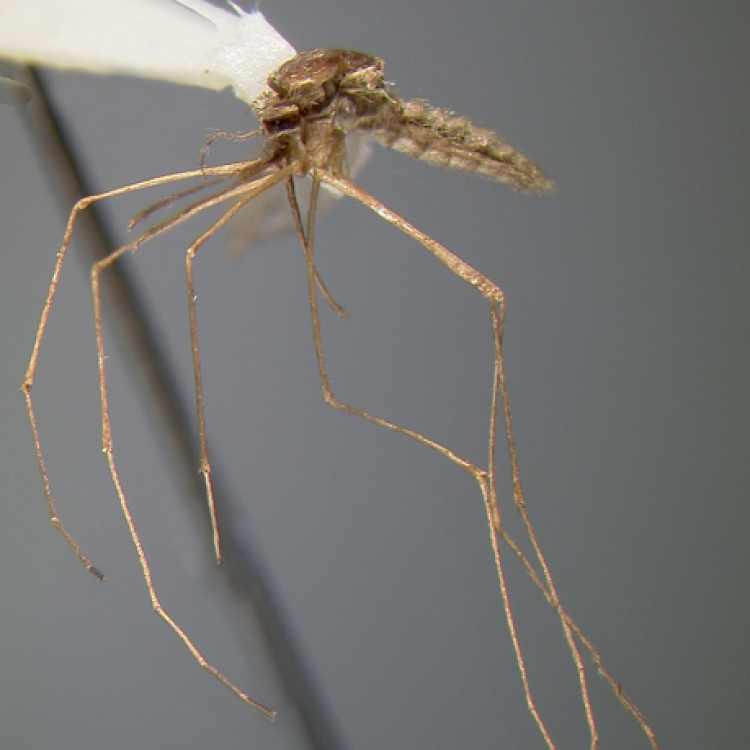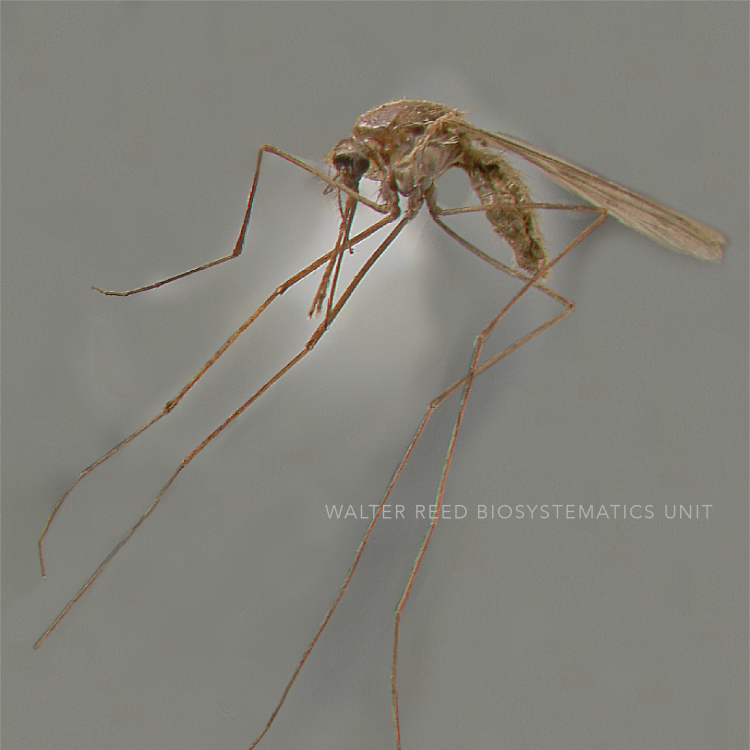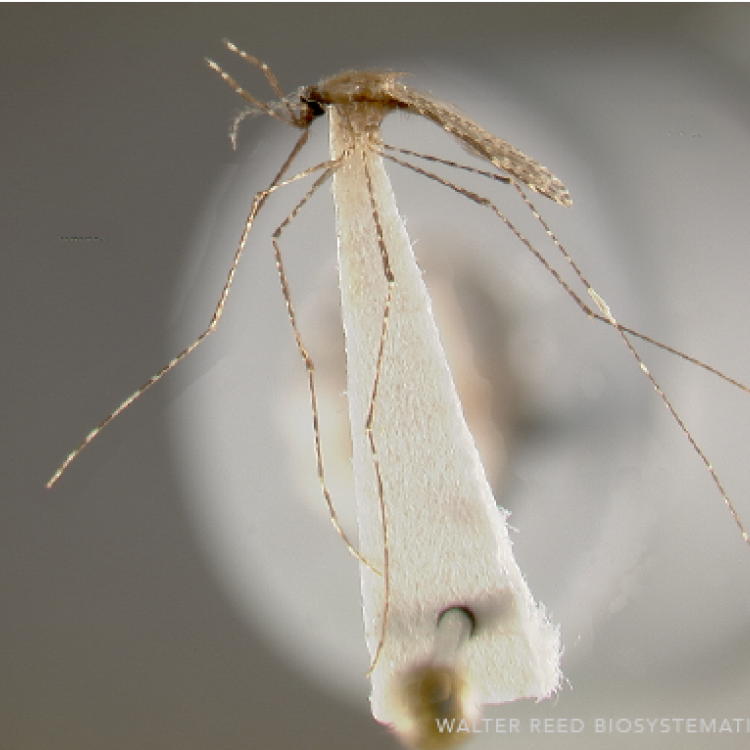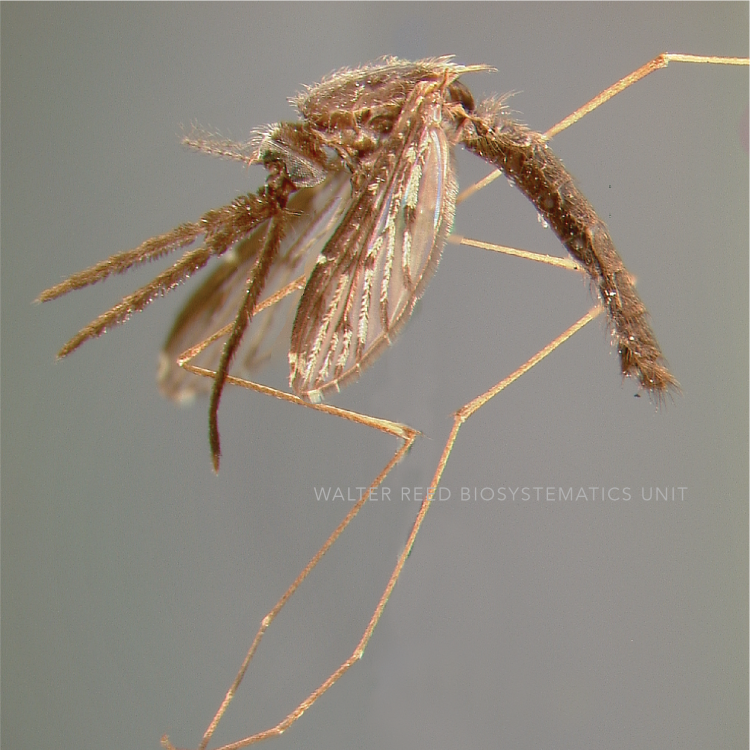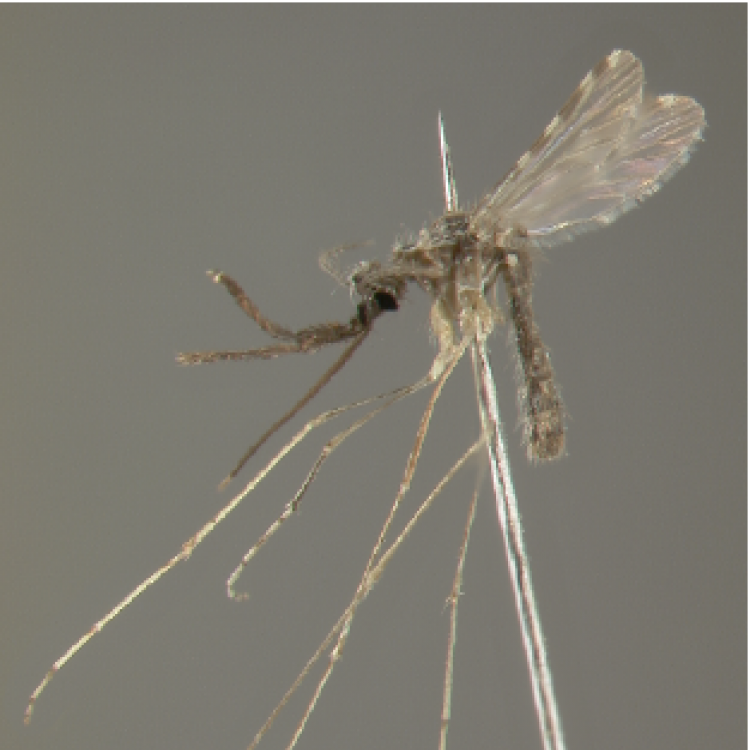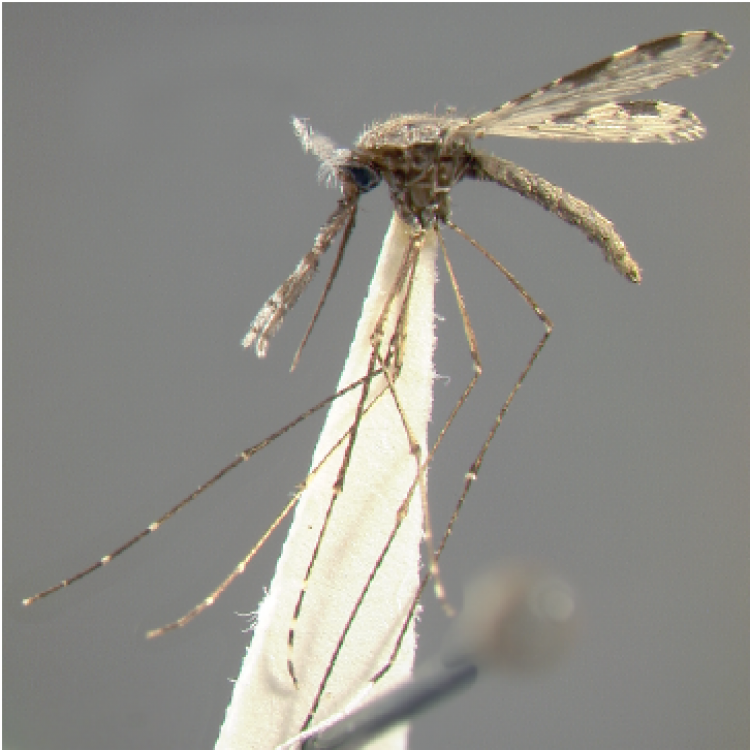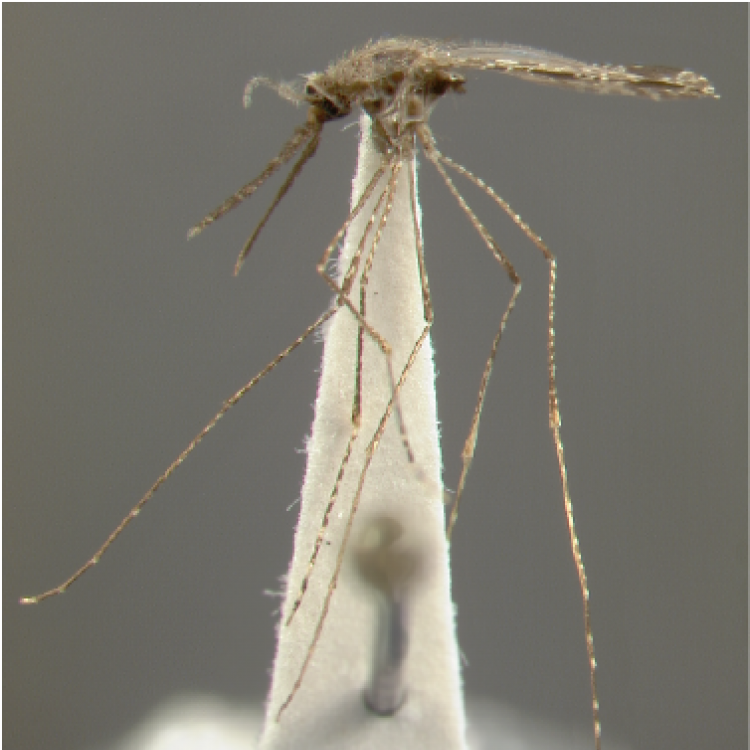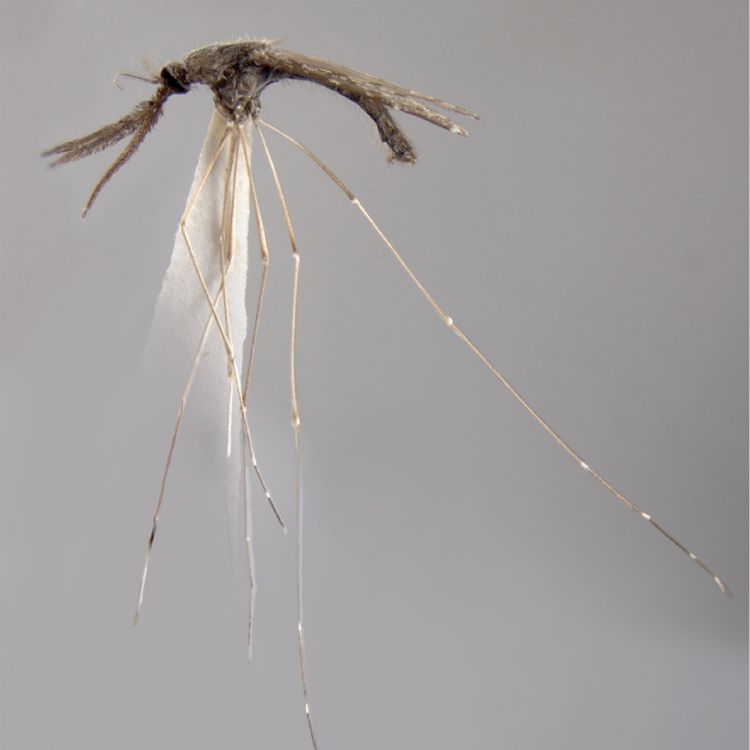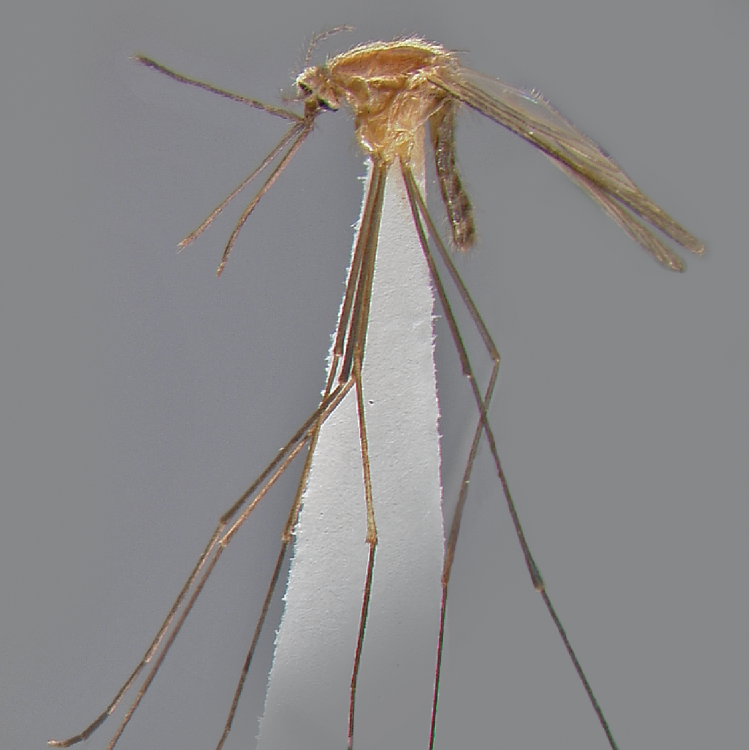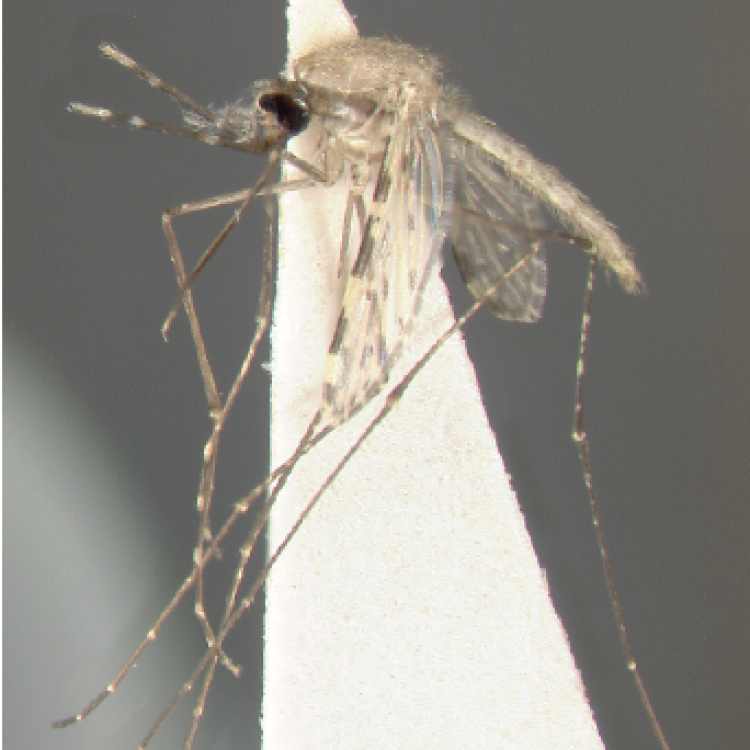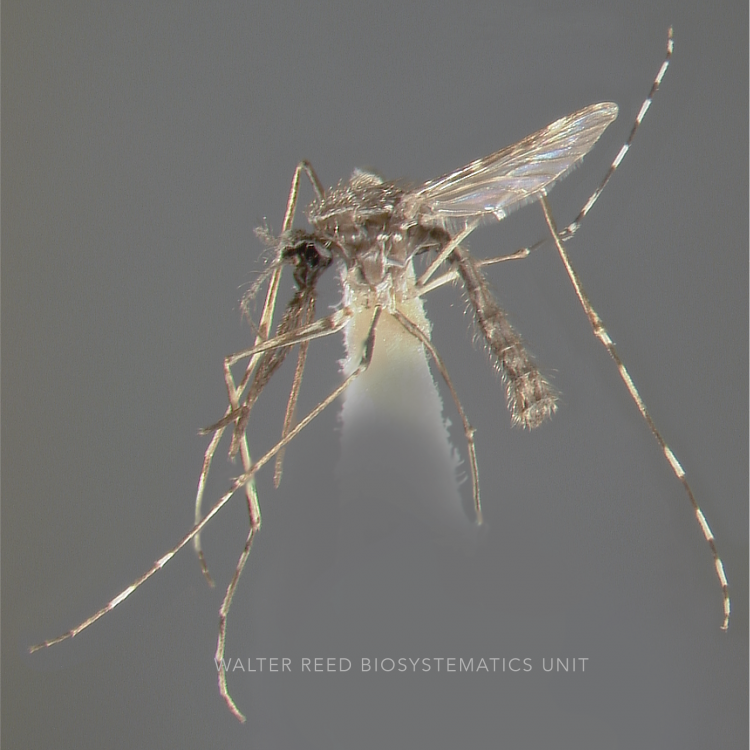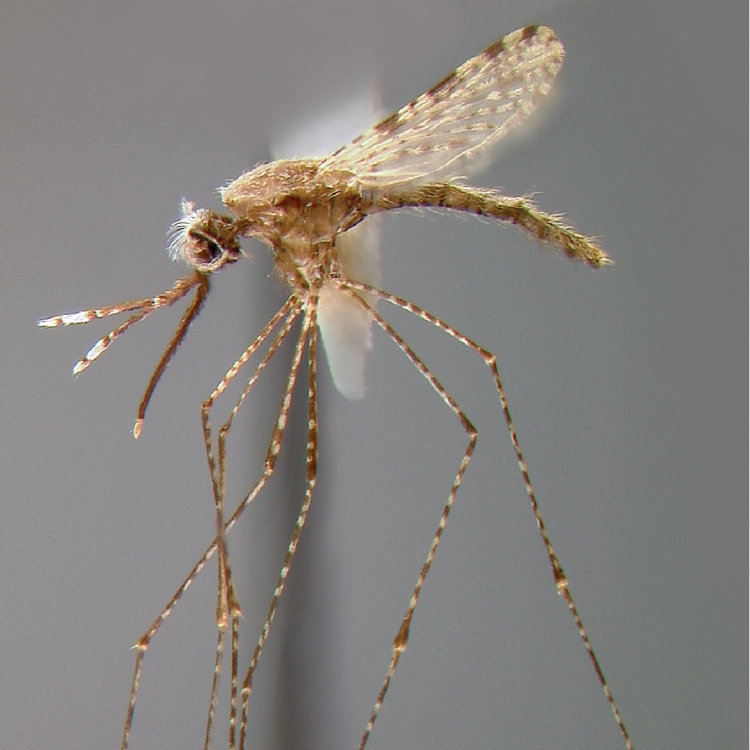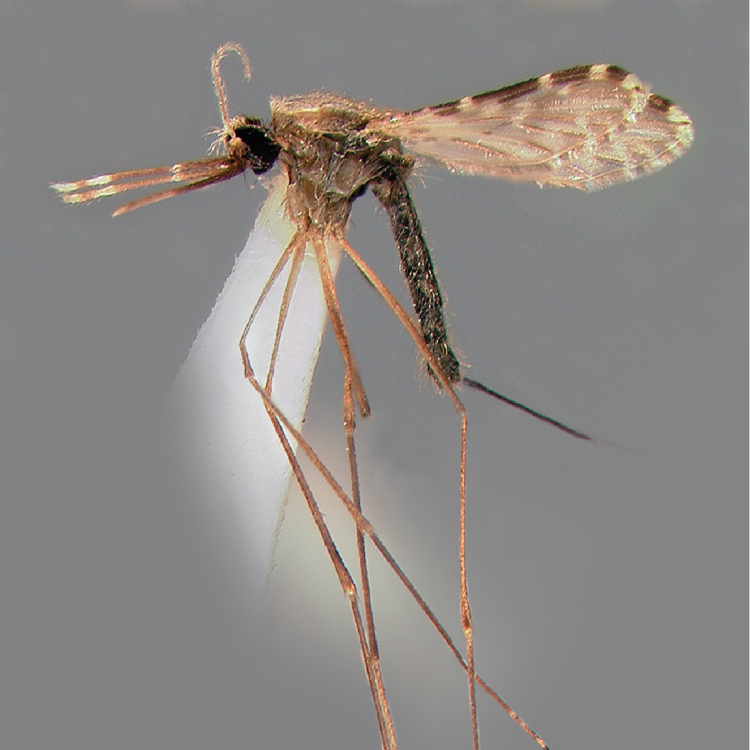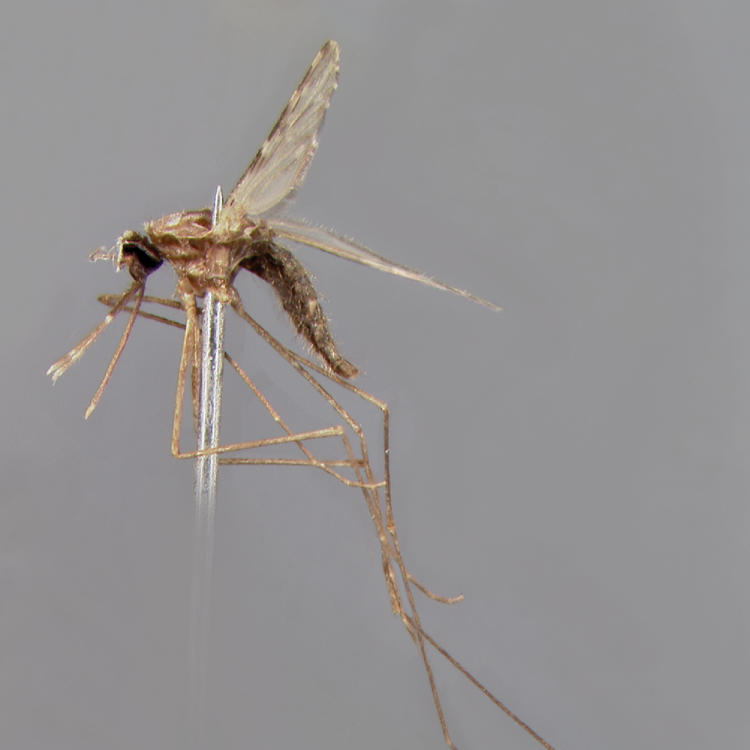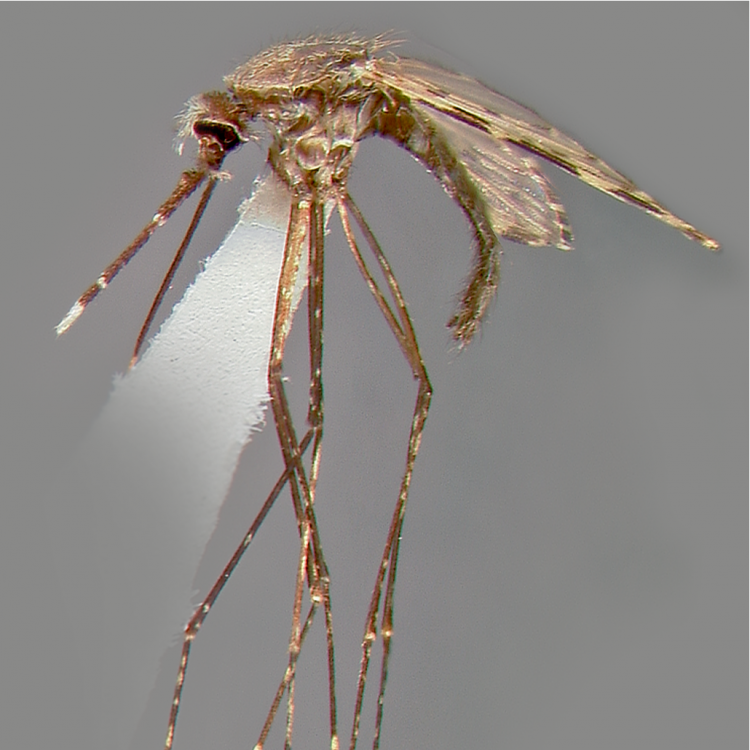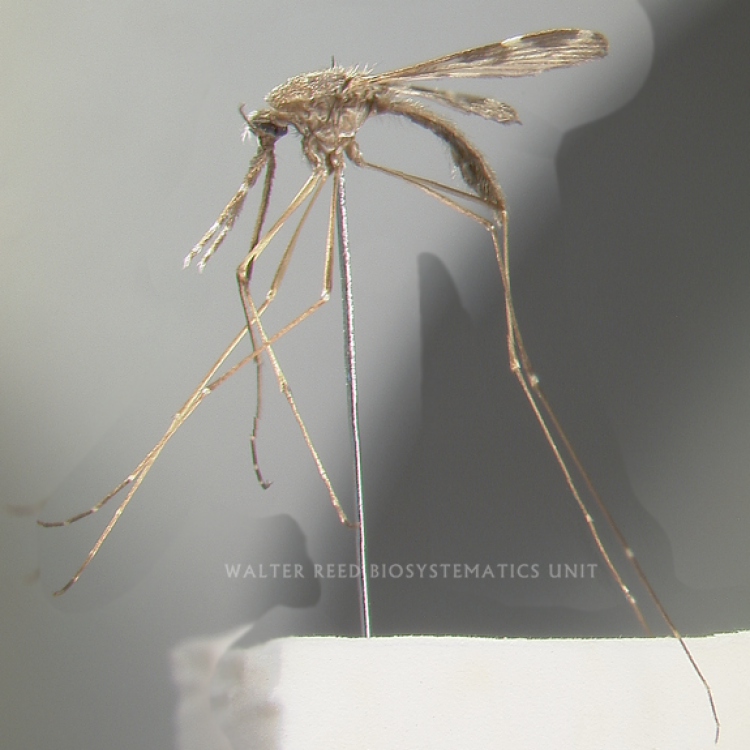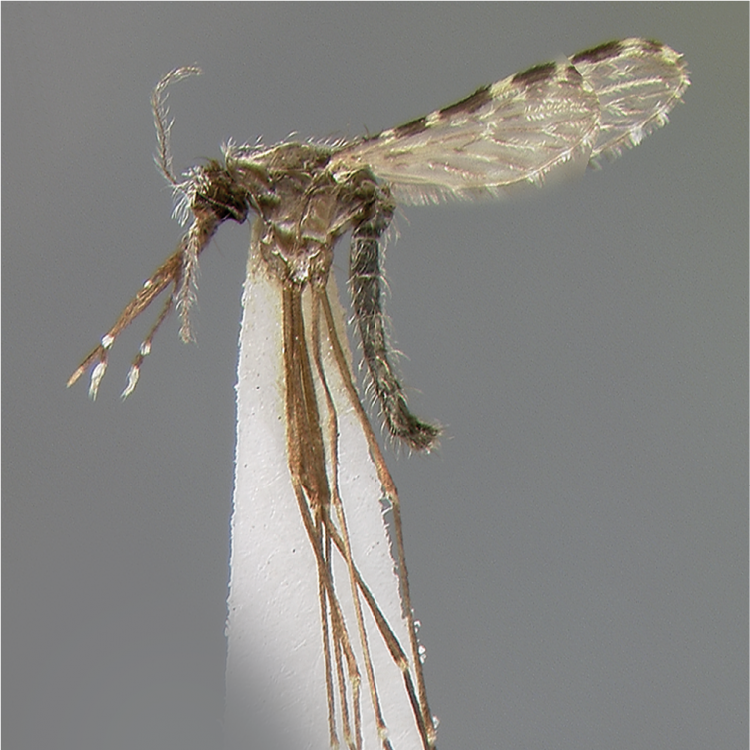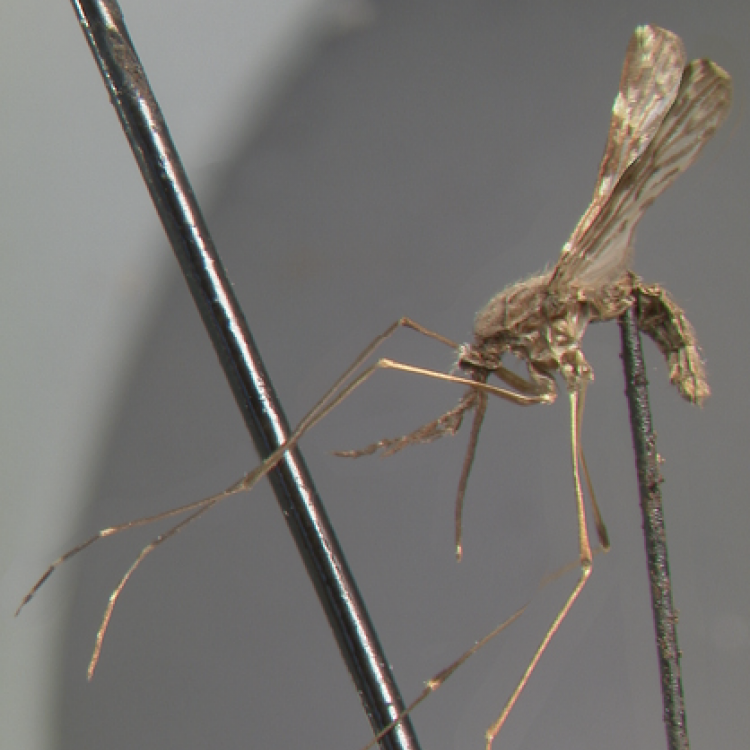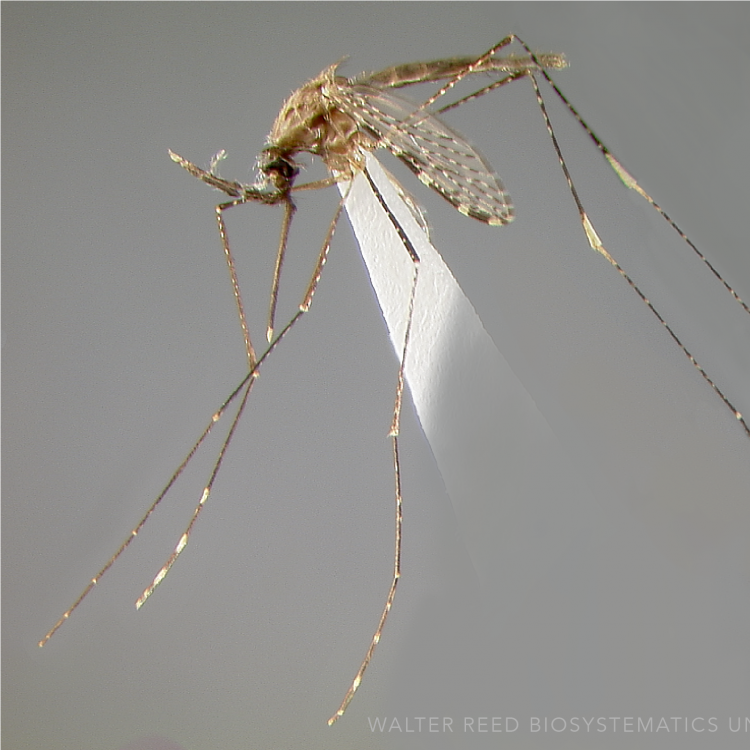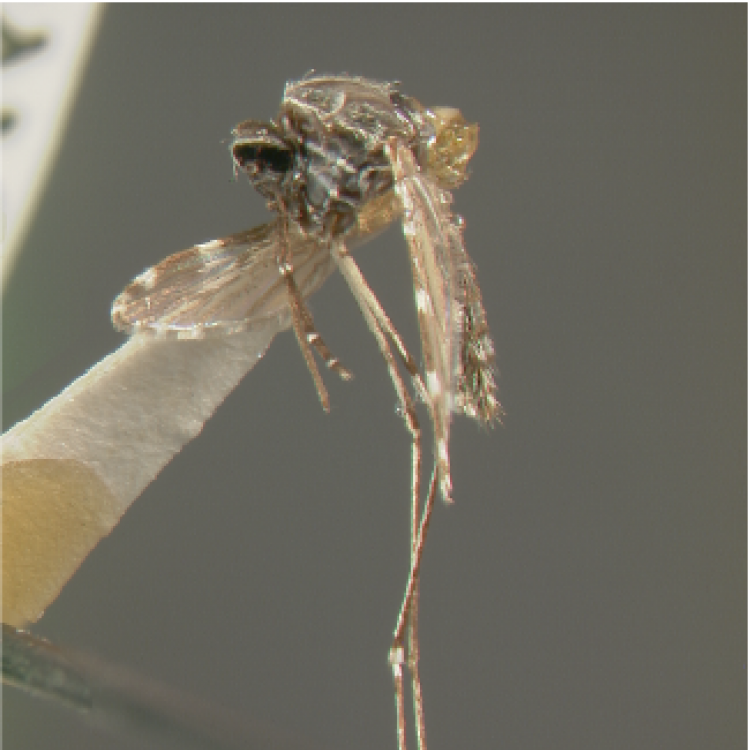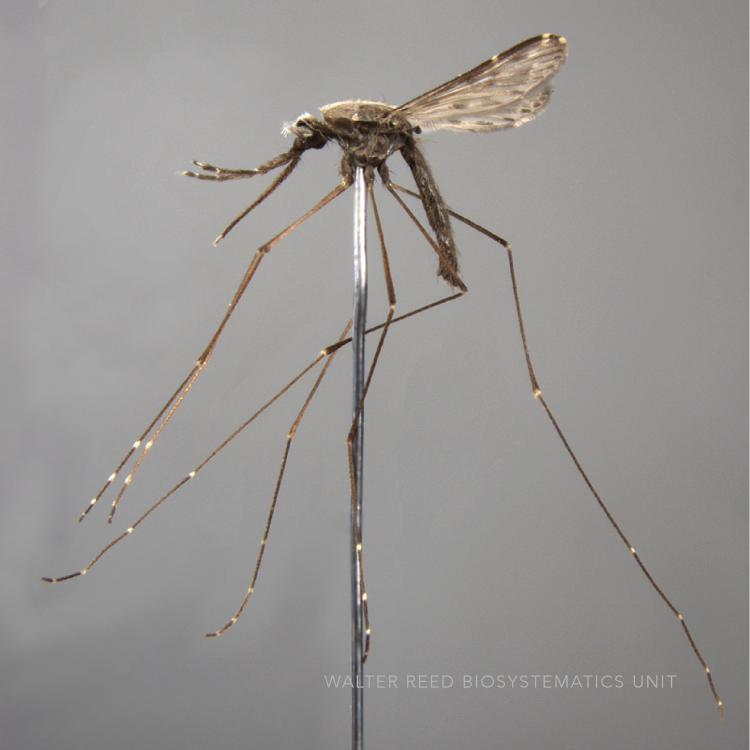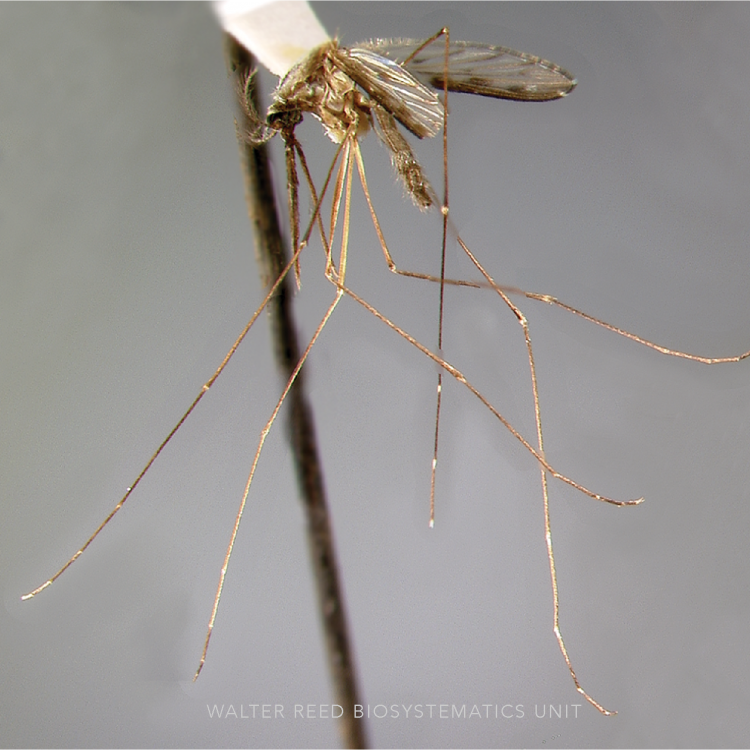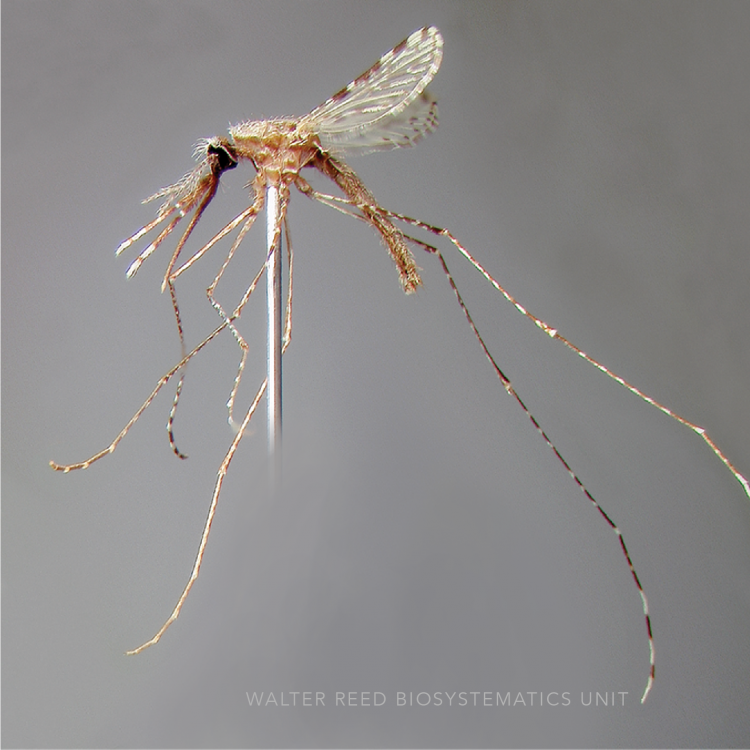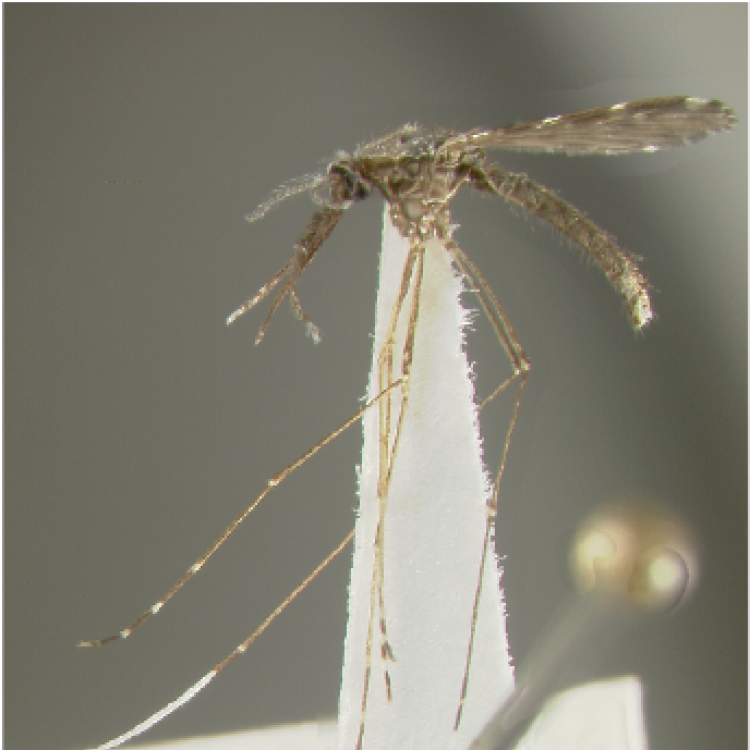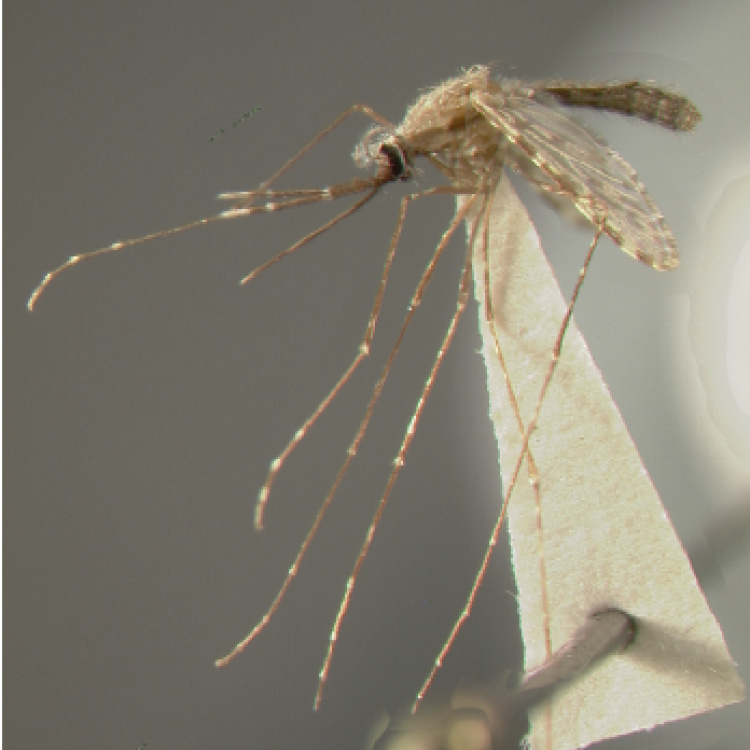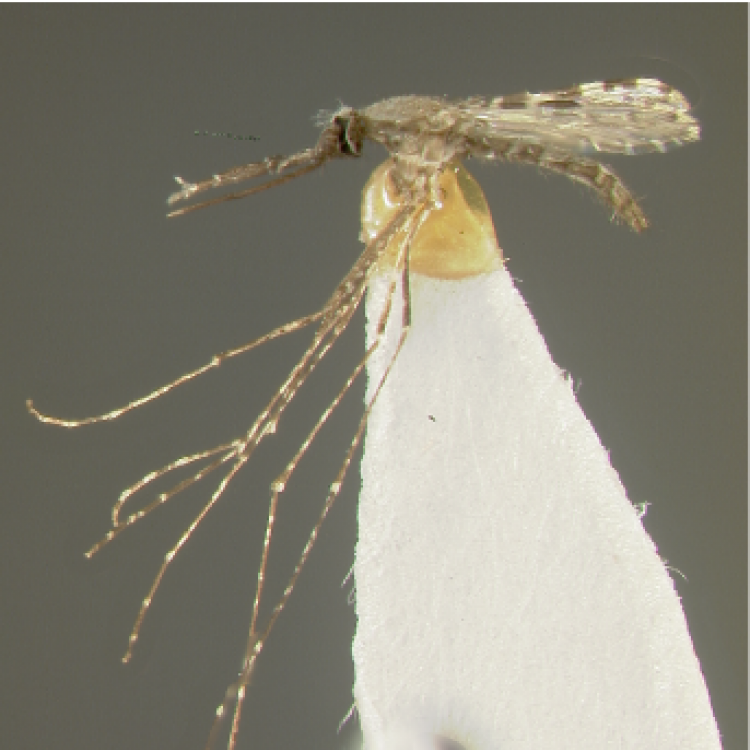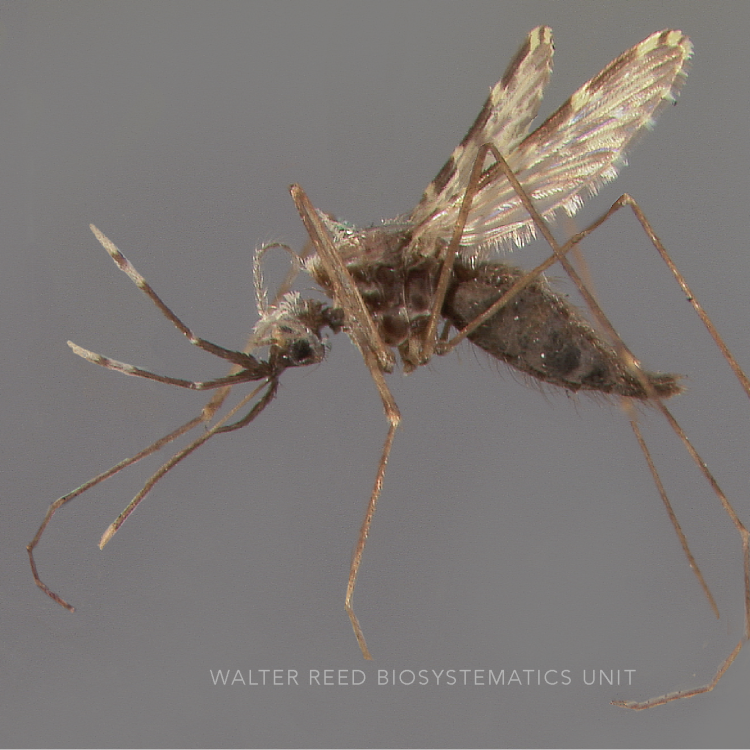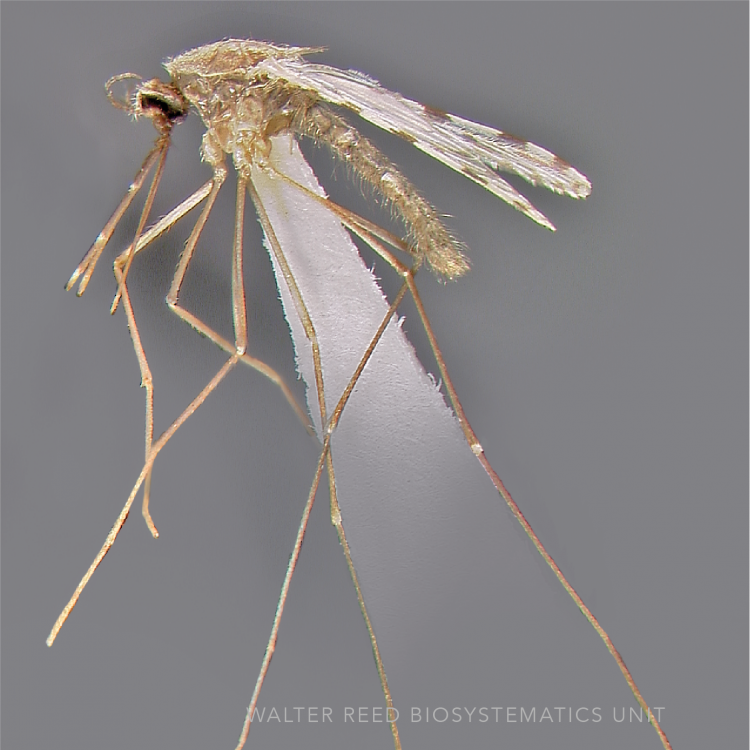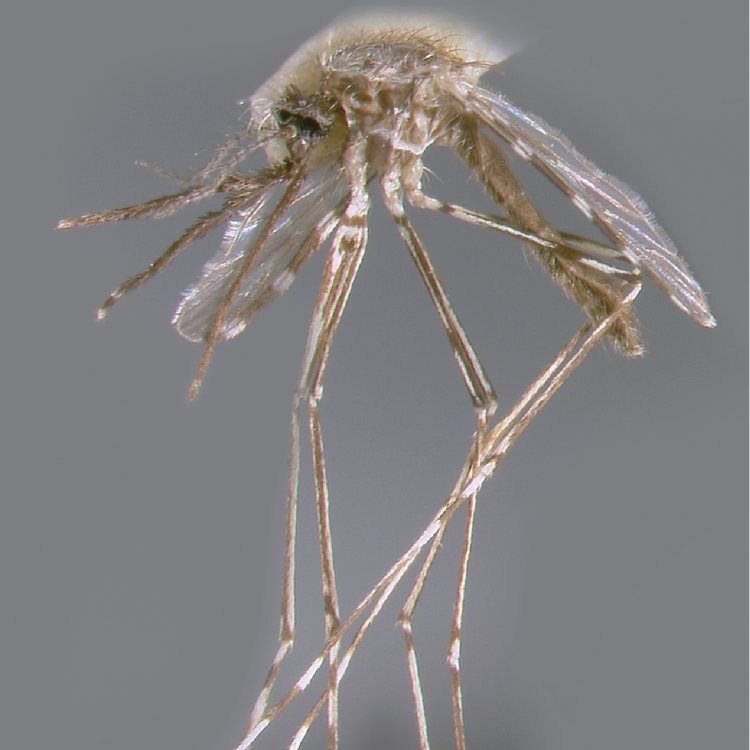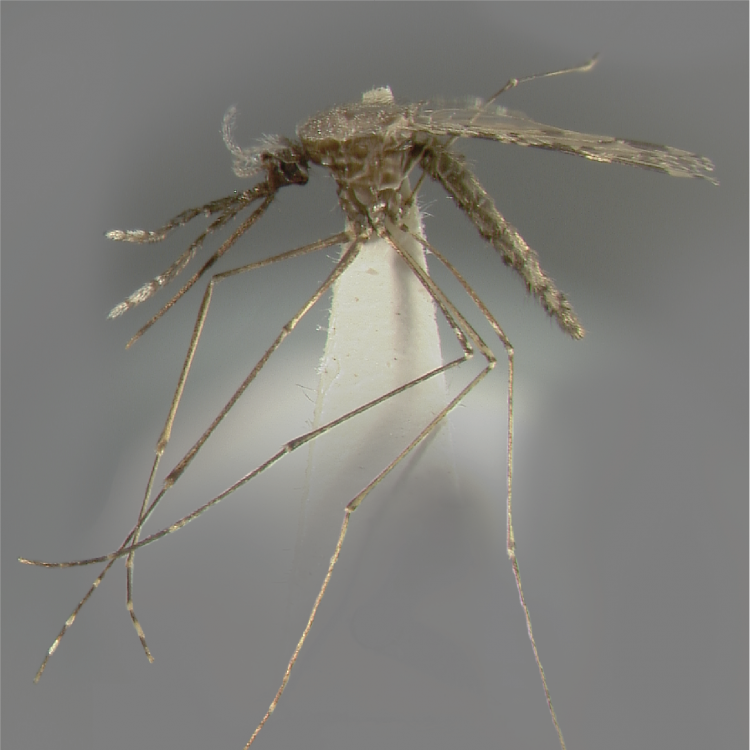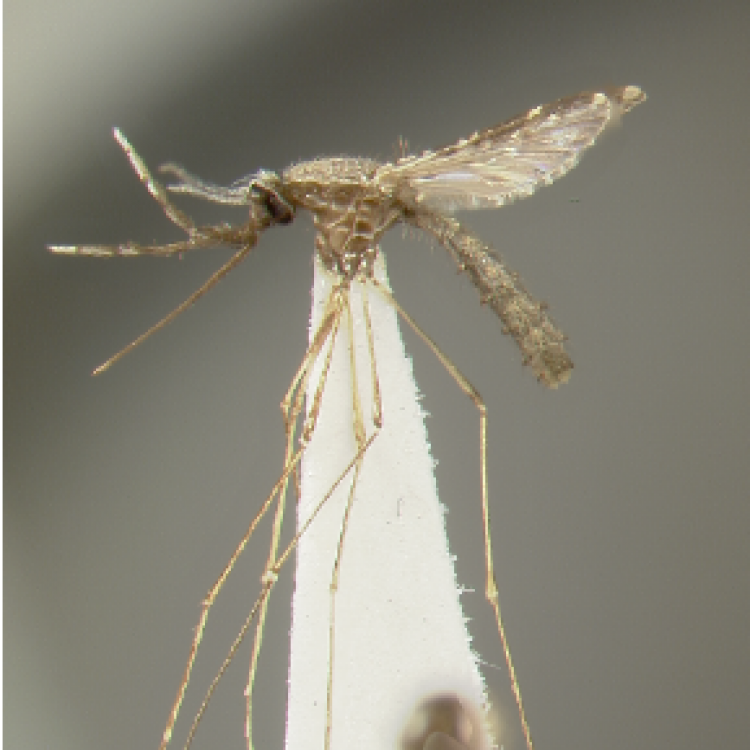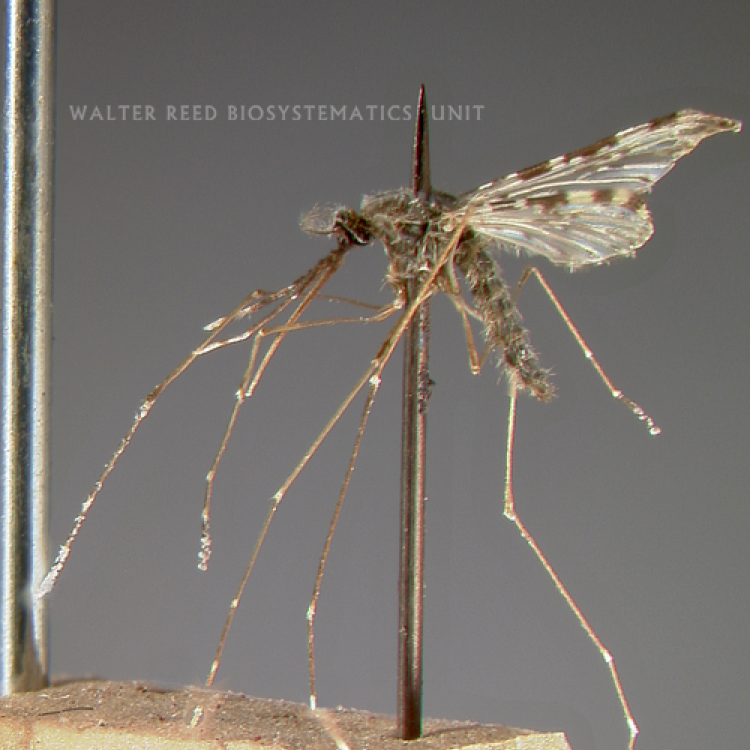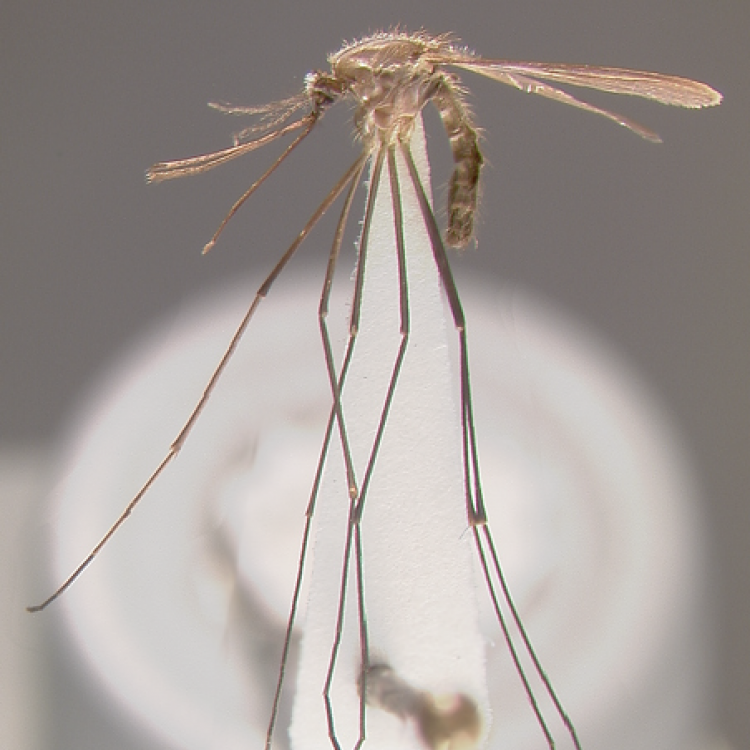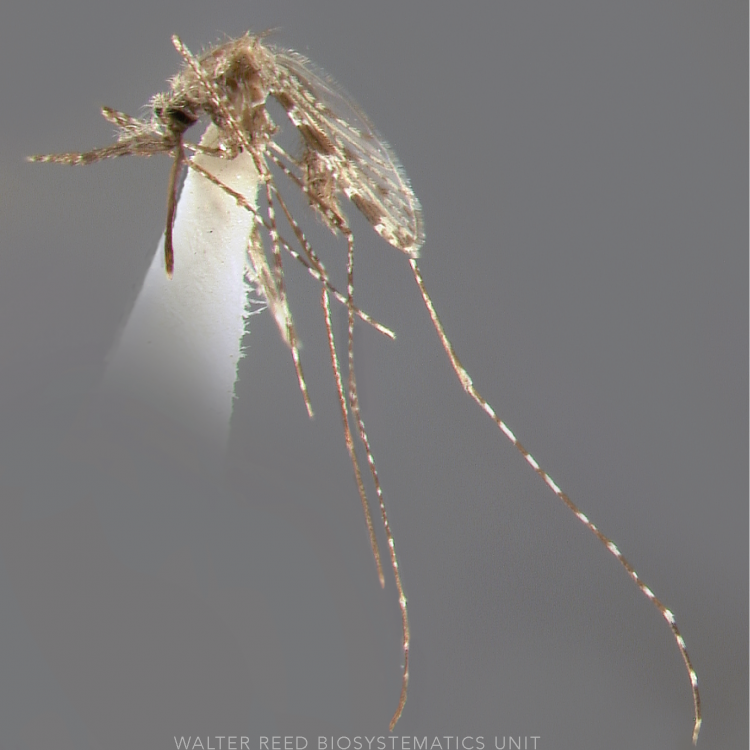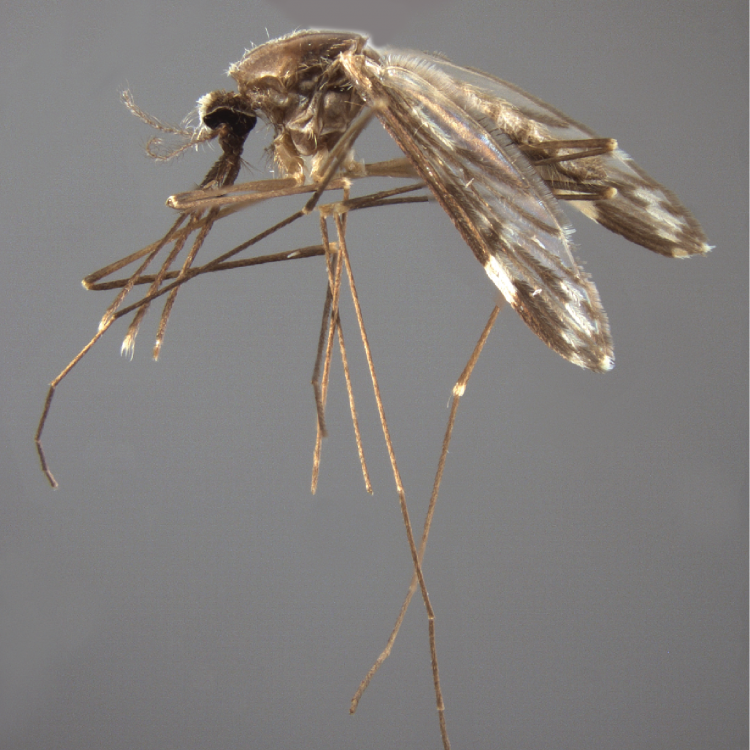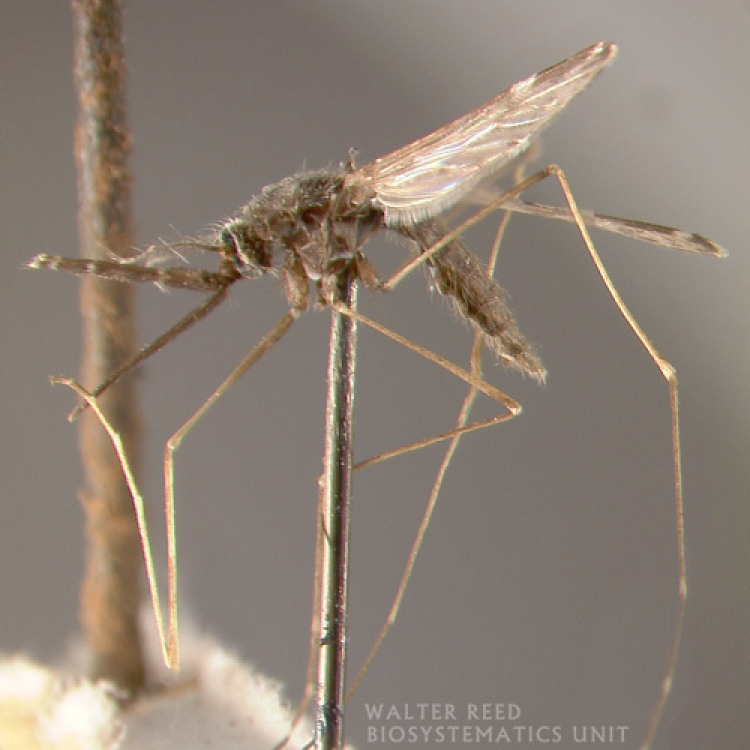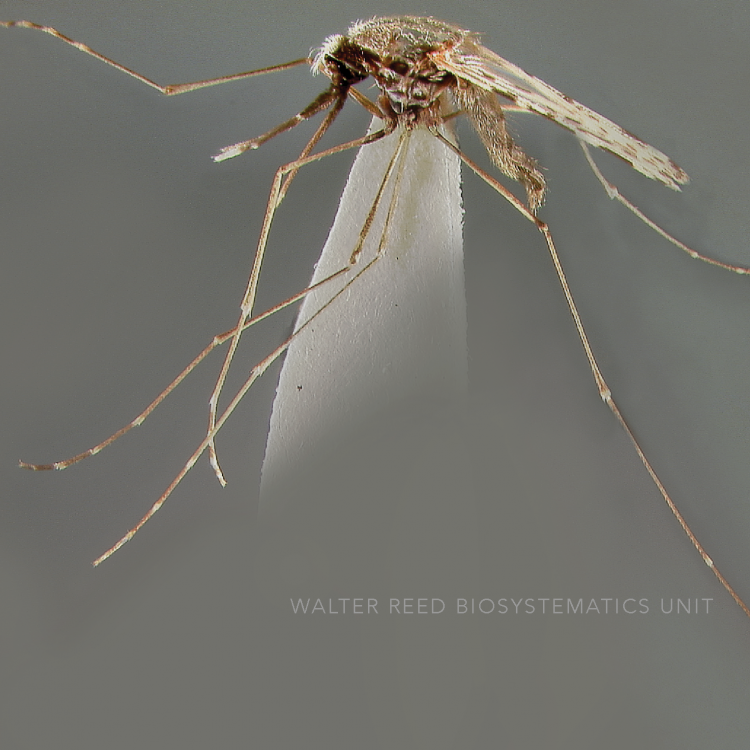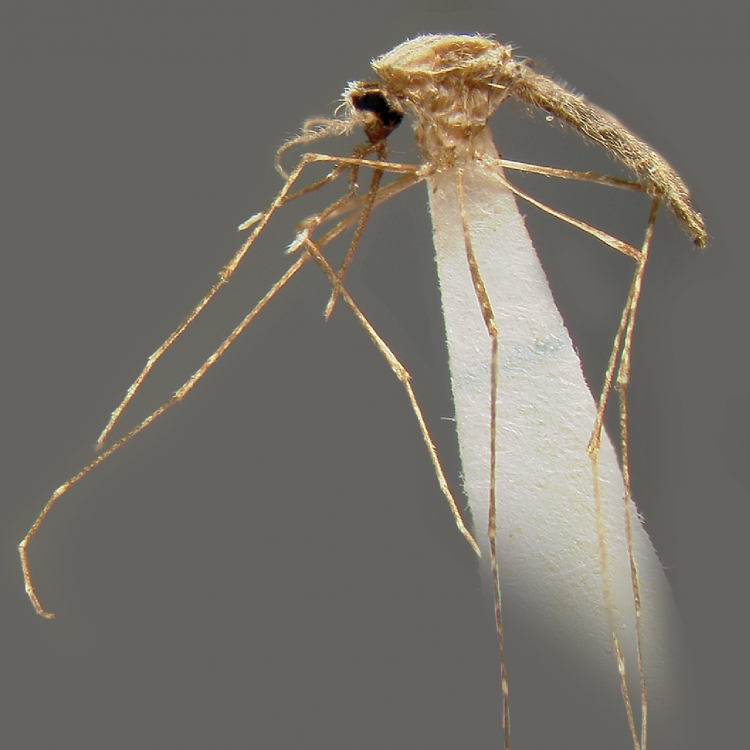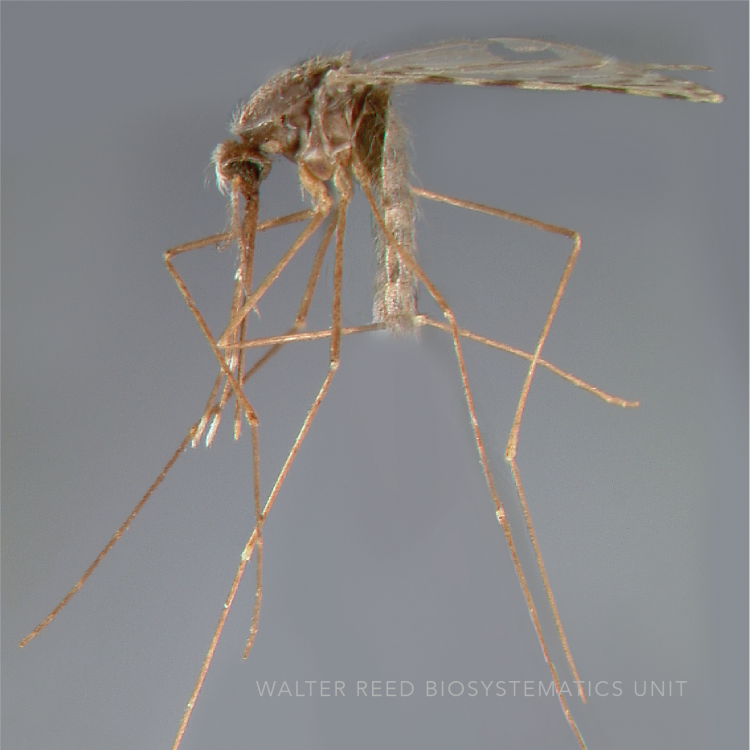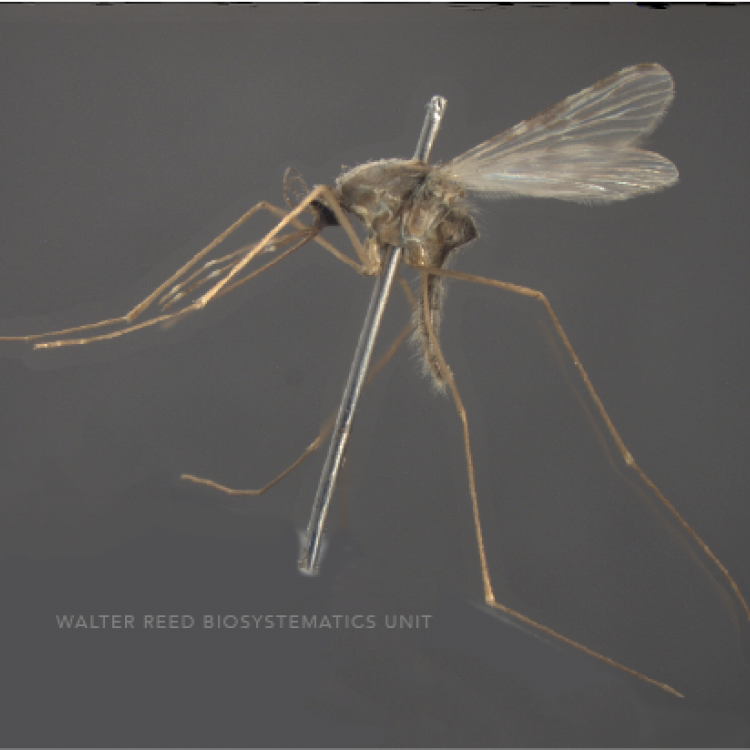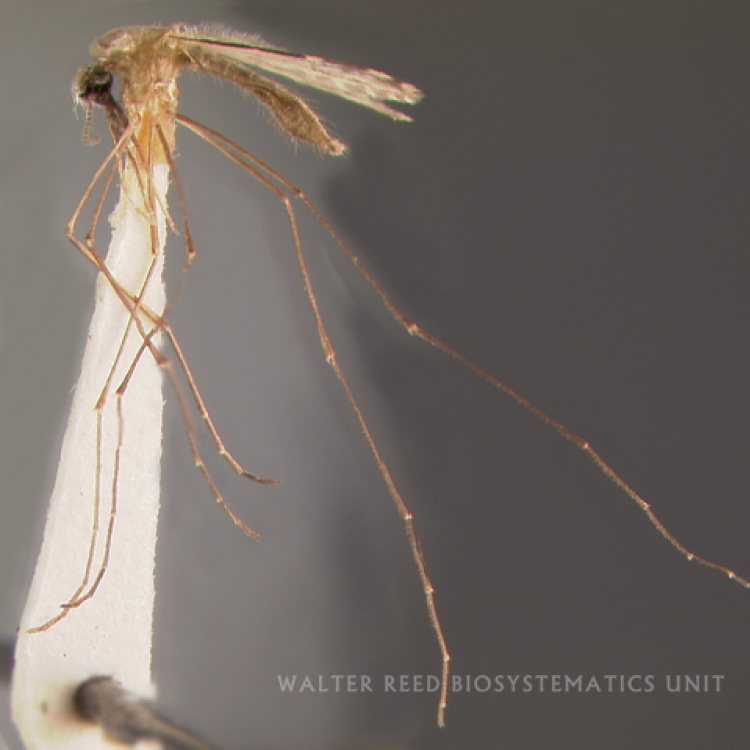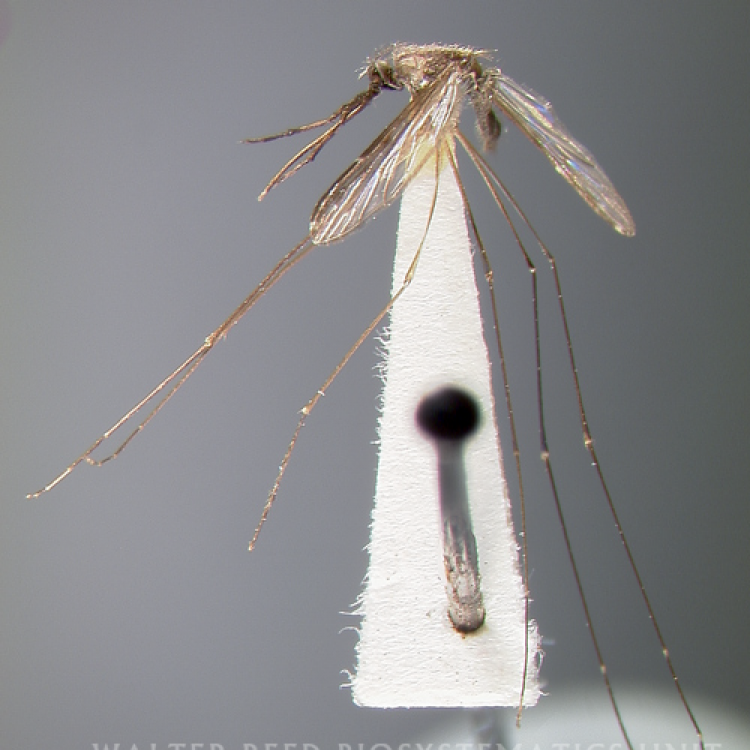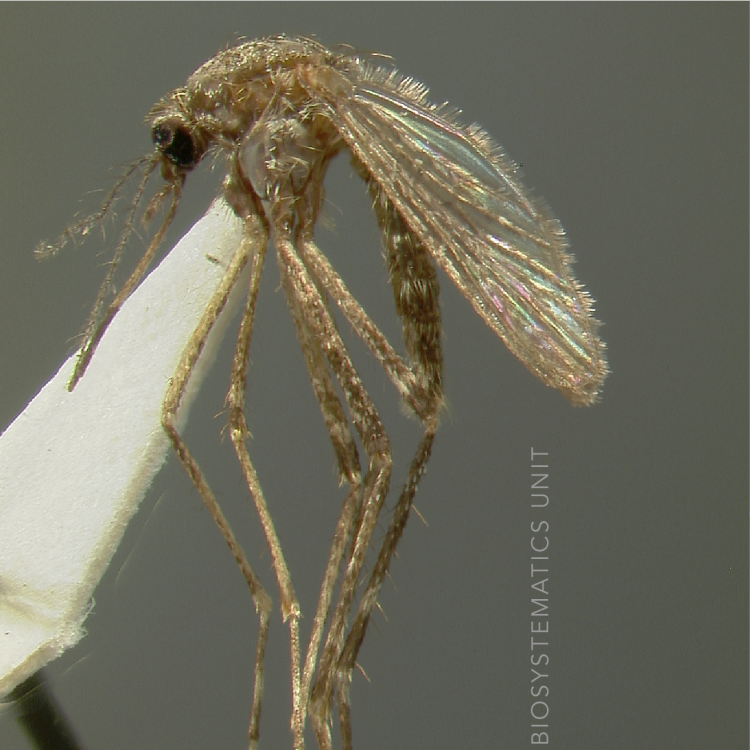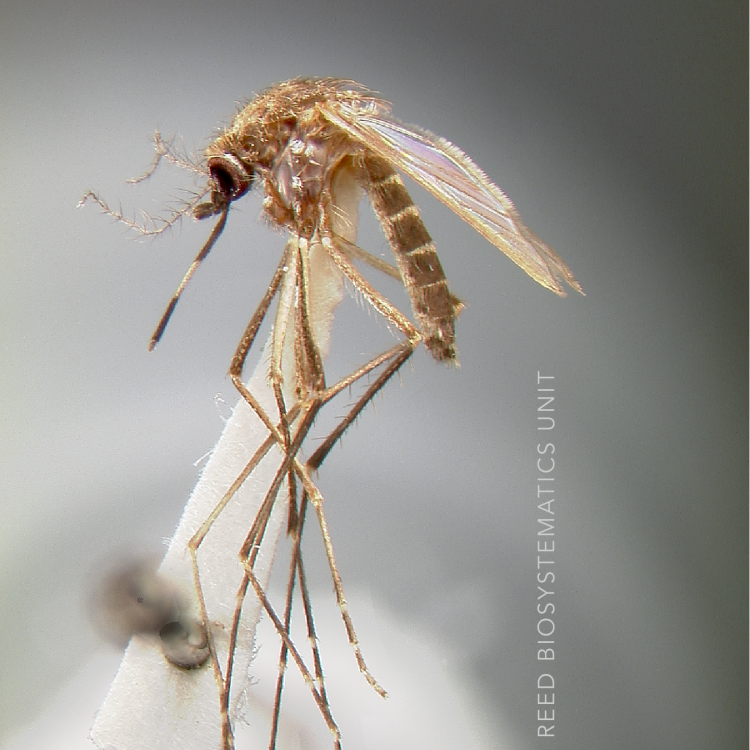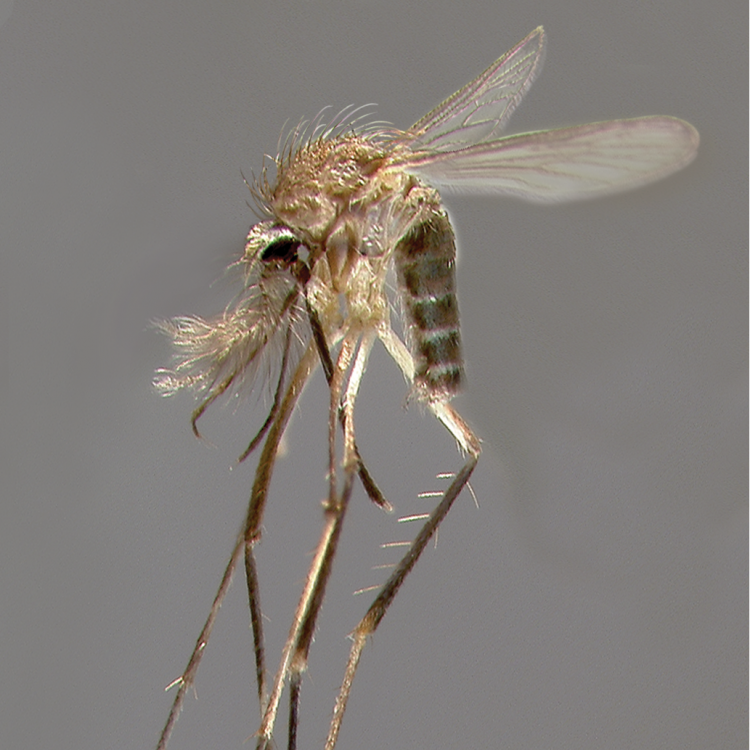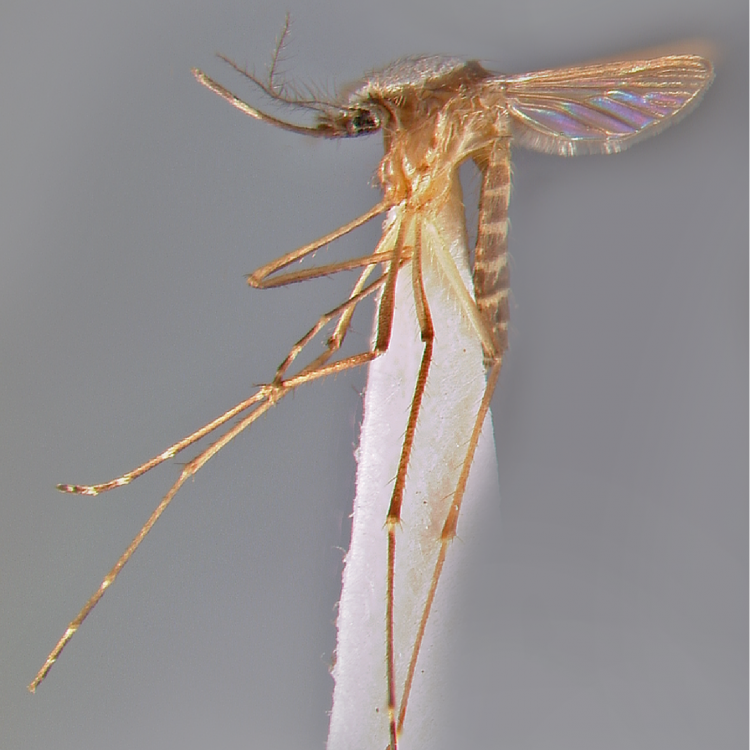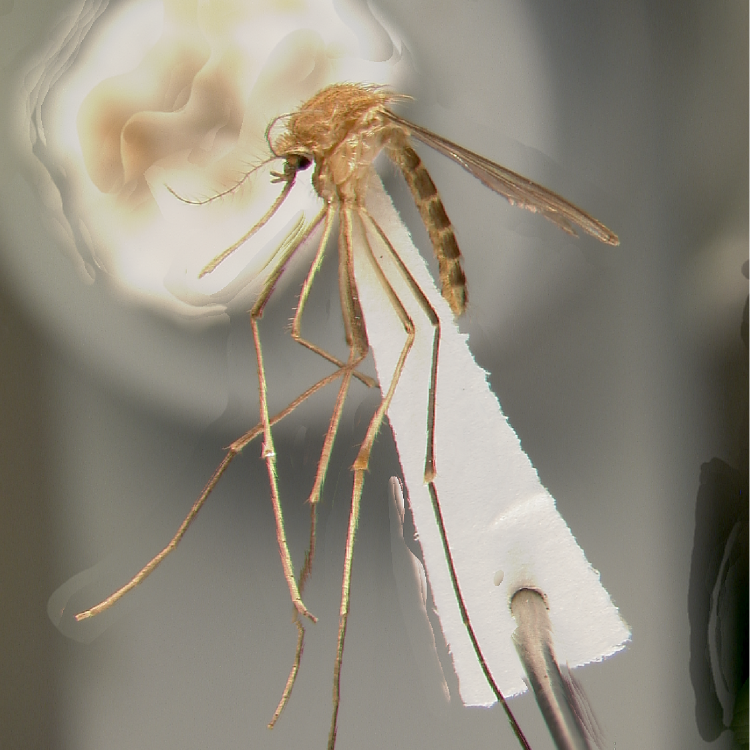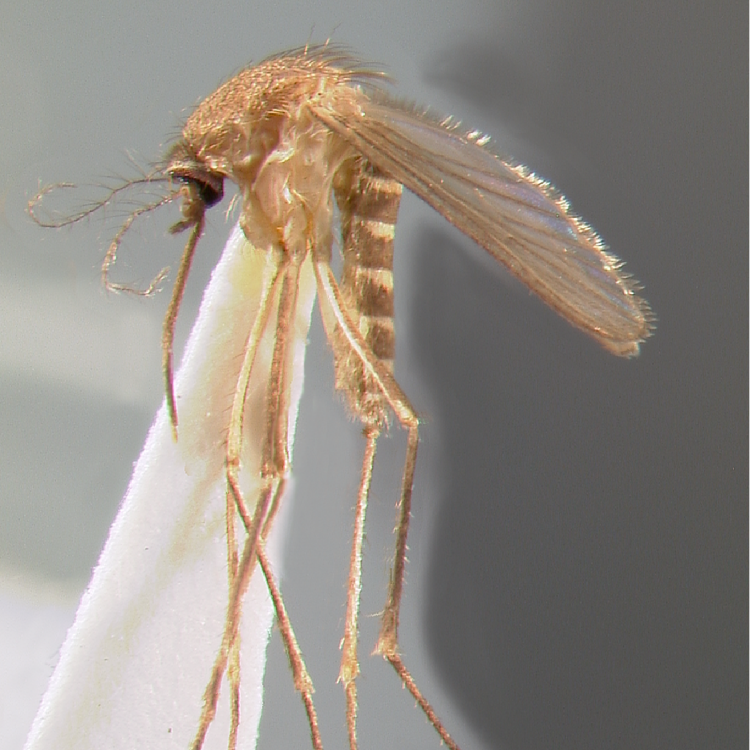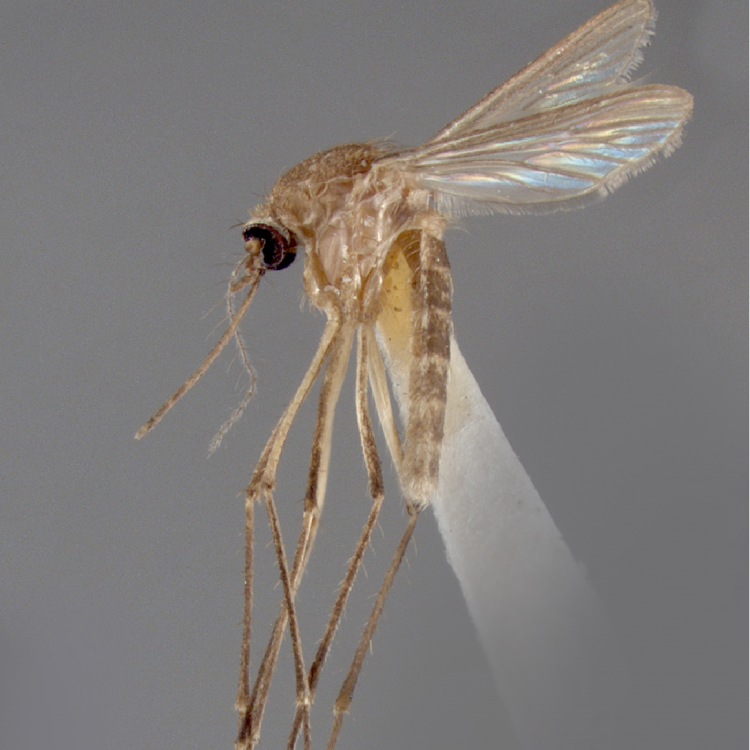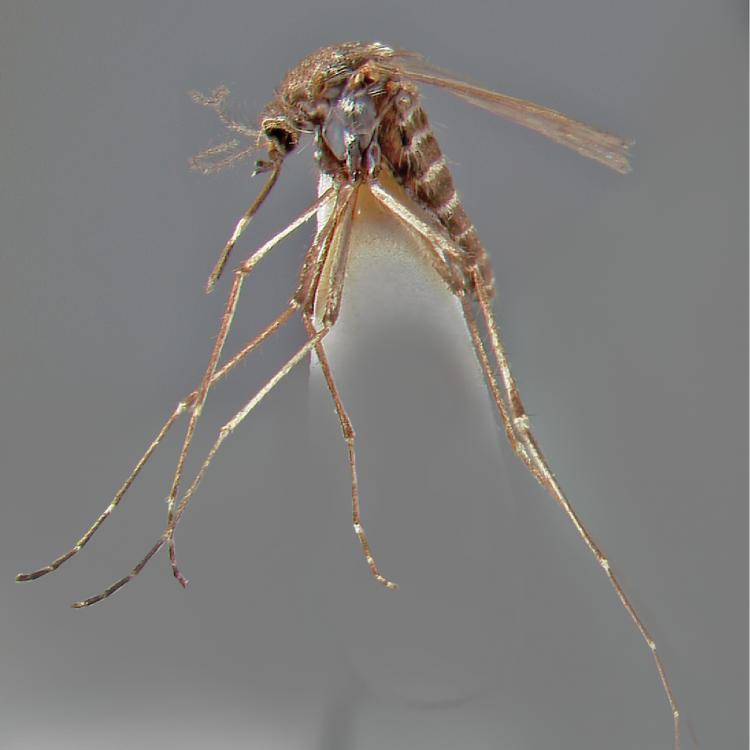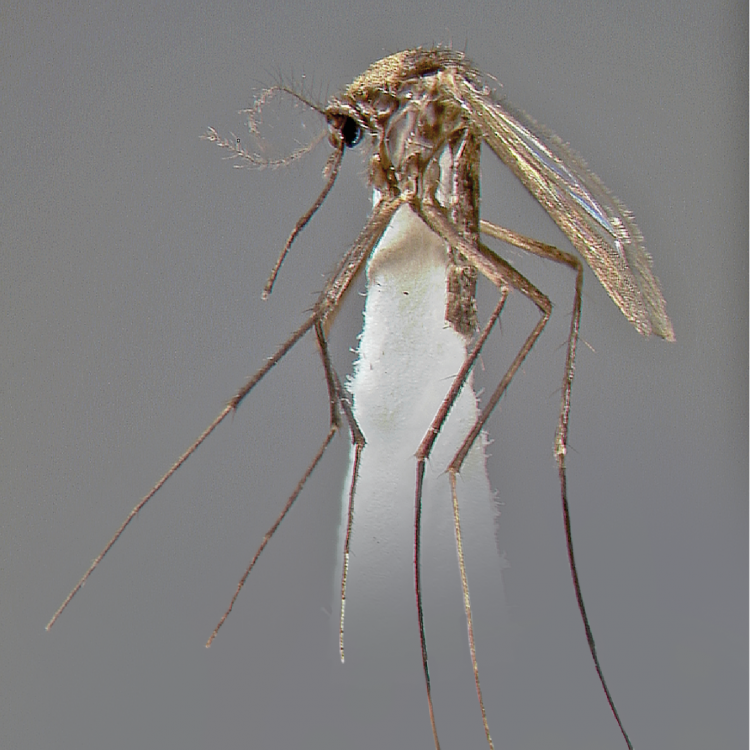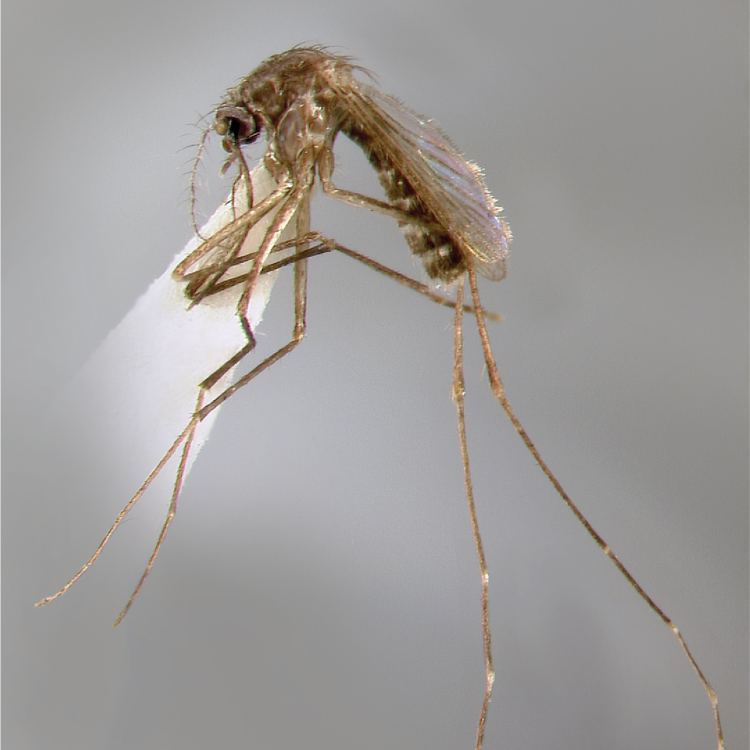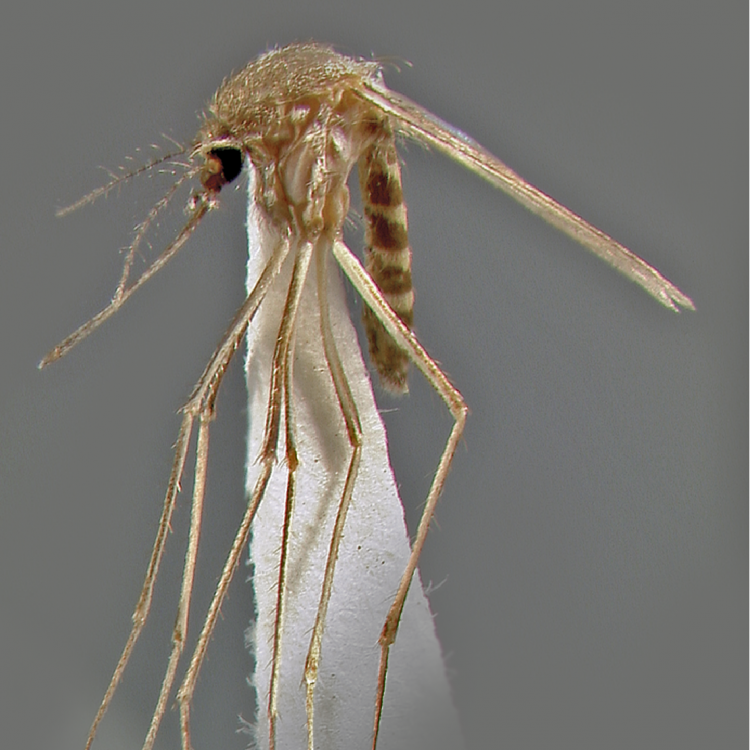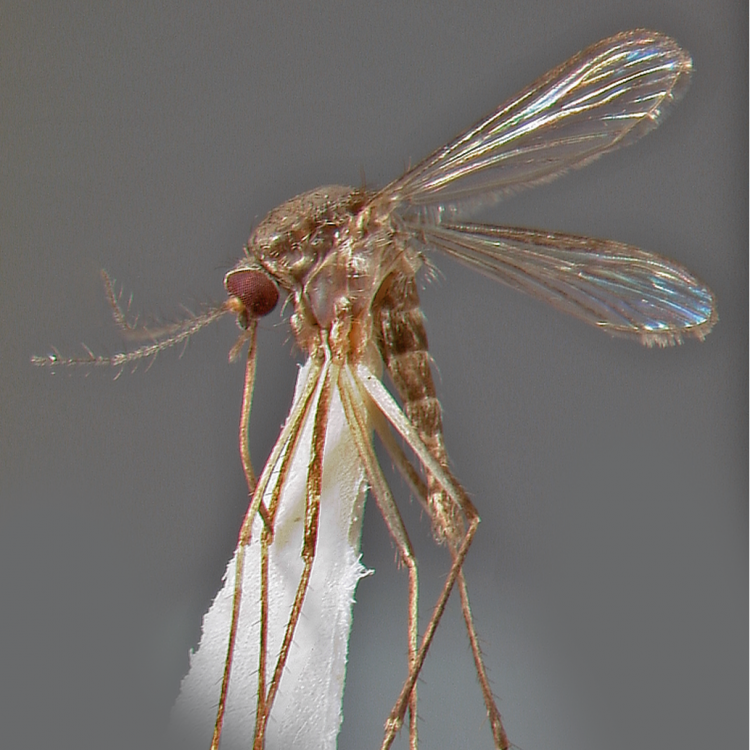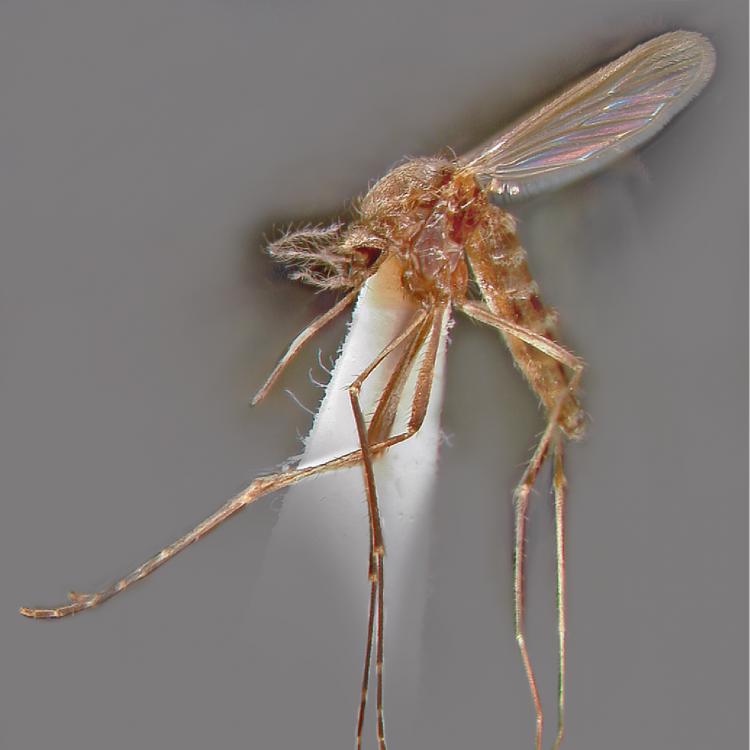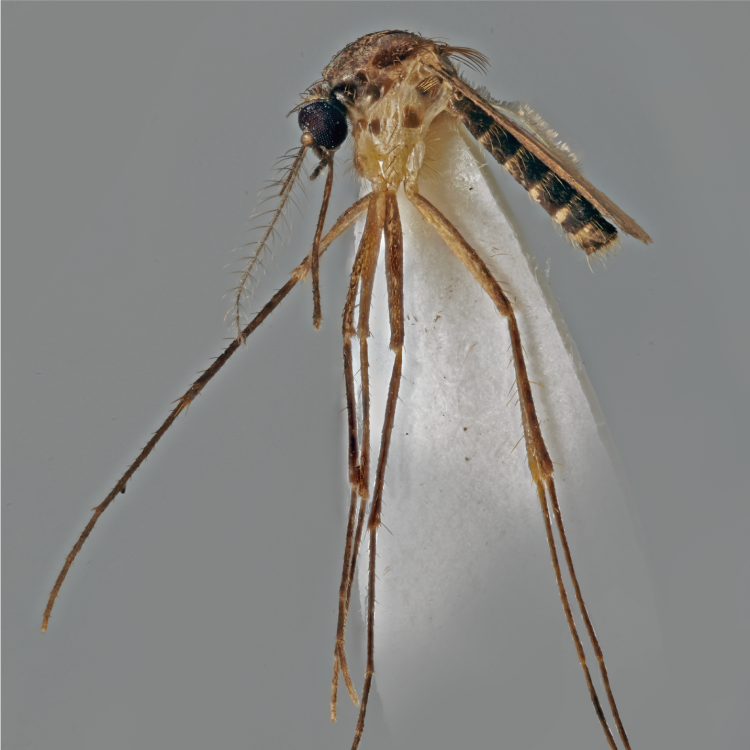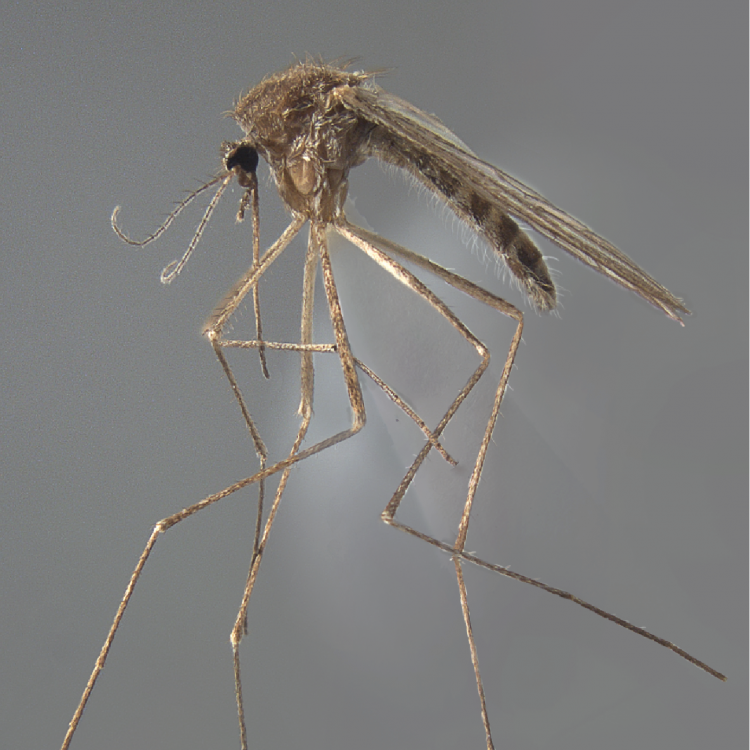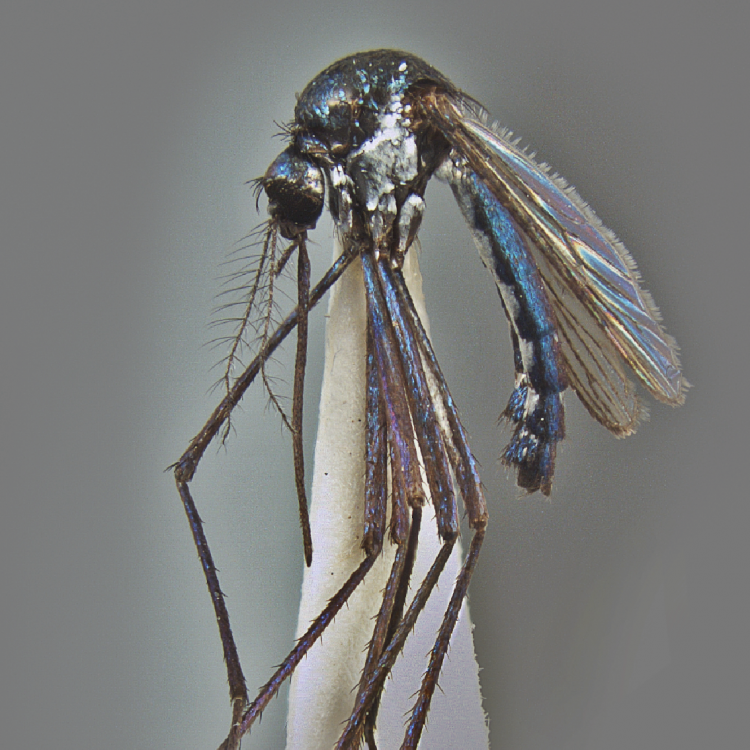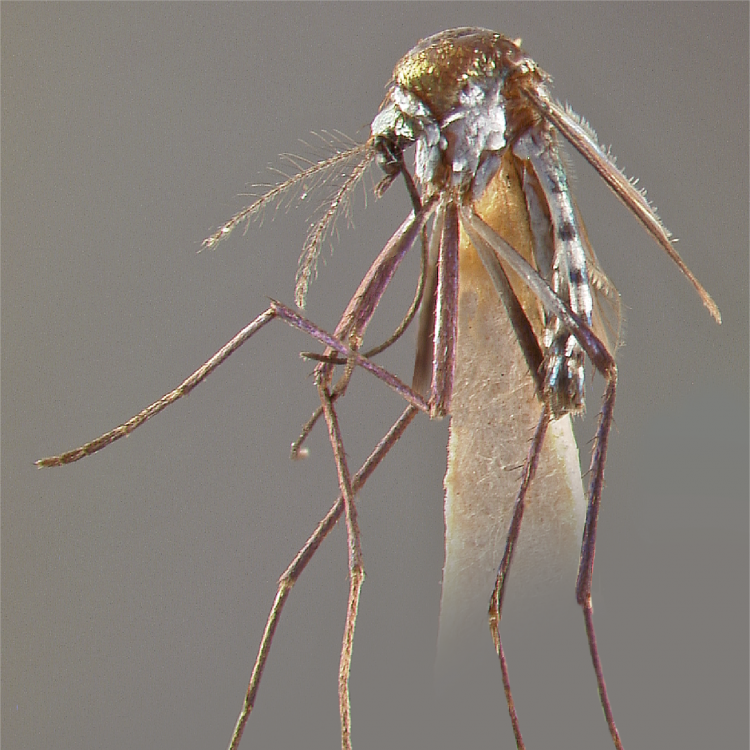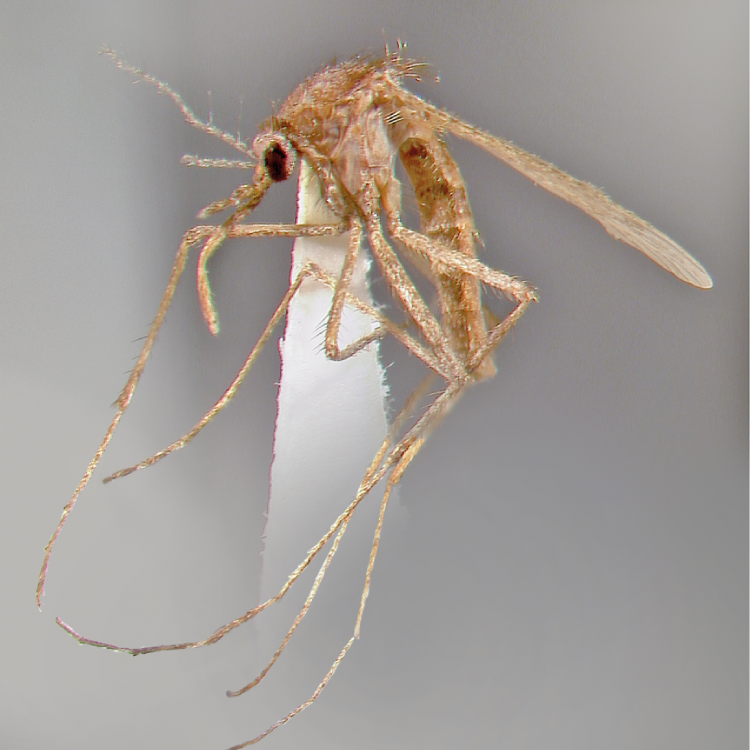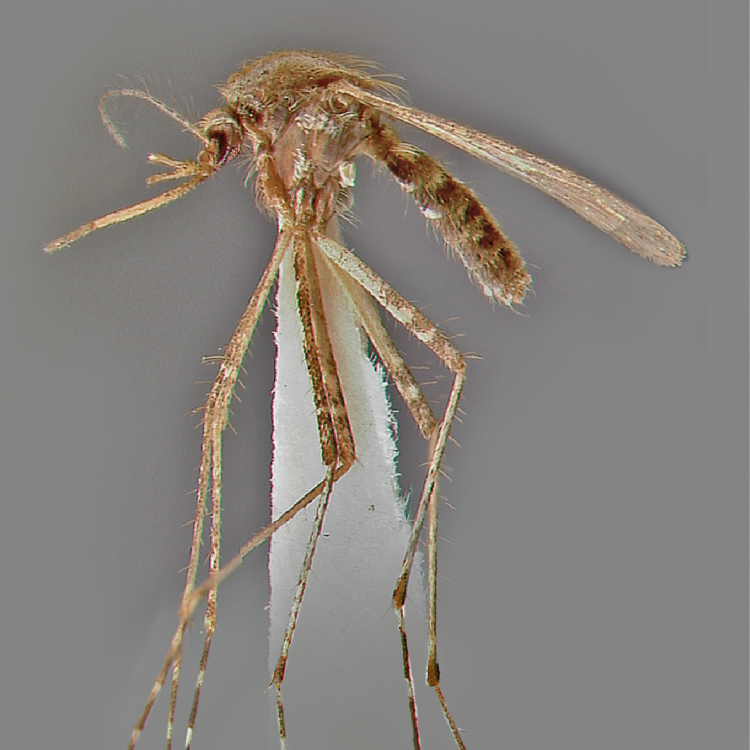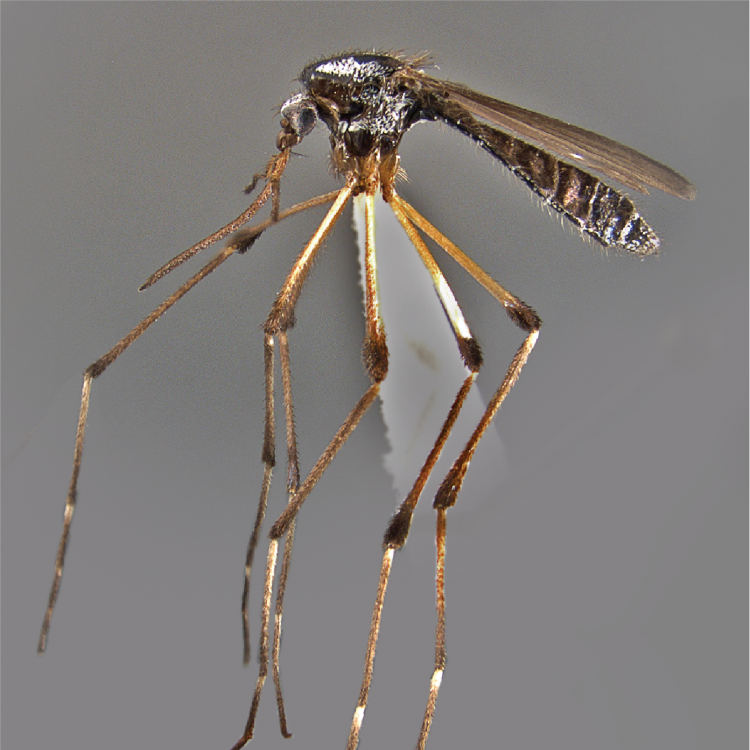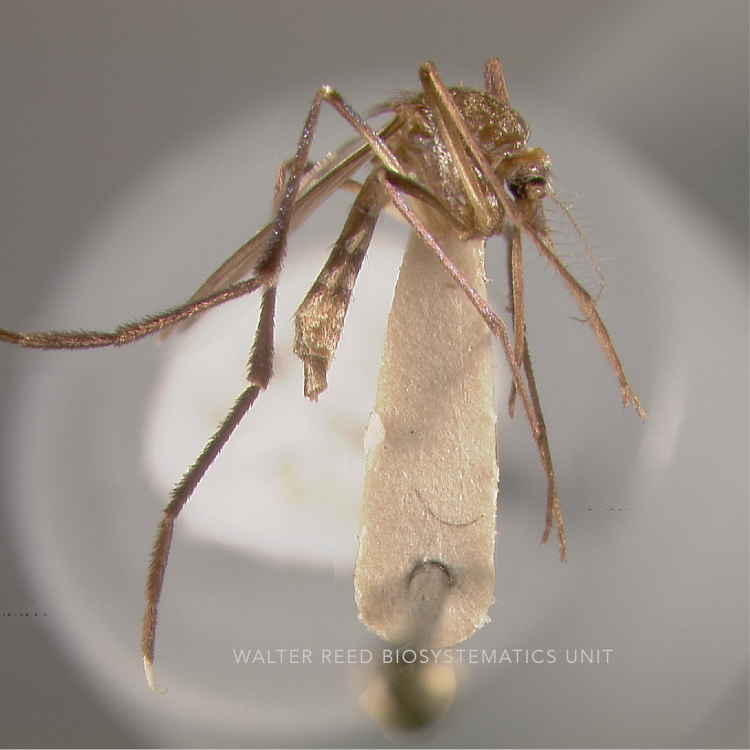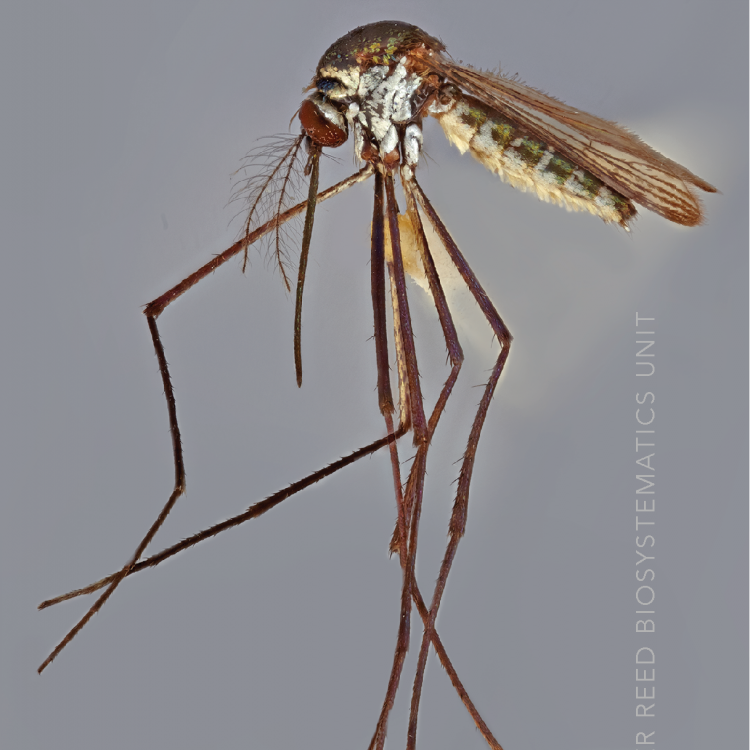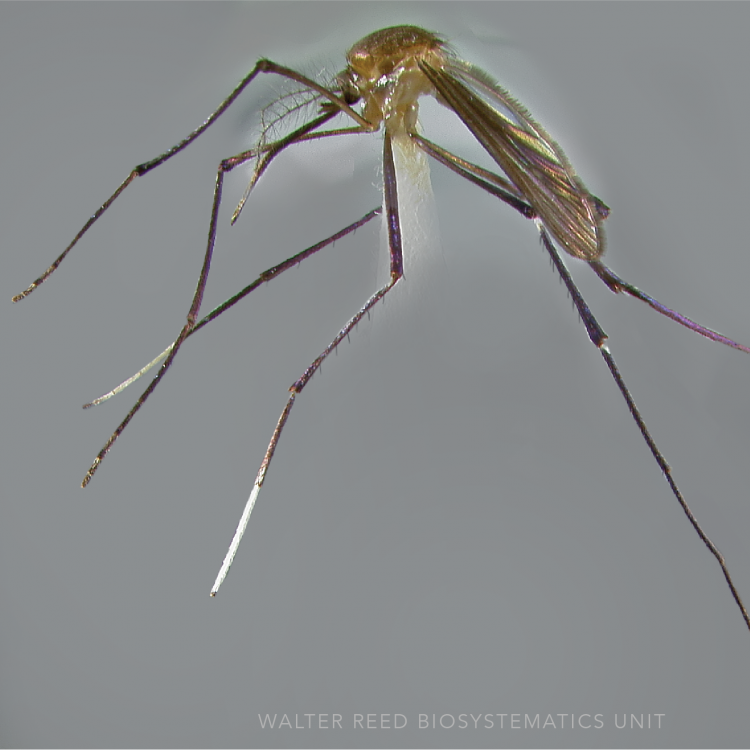NEARCTIC & NEOTROPICAL REGIONS
Etymology: false (Gr); similar to punctipennis
Anopheles pseudopunctipennis is the nominotypical member of the Pseudopunctipennis Group of the Augusticorn Section Other members of the Pseudopunctipennis Group include An. chiriquiensis Komp, An. eiseni Coquillett, An. franciscanus McCracken, An. hectoris Giaquinto-Mira, An. parapunctipennis Martini, and An. tibiamaculatus (Neiva). This medically important taxon is highly diverse and may comprise a number of bona fida species. Anopheles pseudopunctipennis has five recognized subspecies—An. pseudopunctipennis levicastilloi Leví-Castillo, An. pseudopunctipennis neghmei Mann, An. pseudopunctipennis noei Mann, An. pseudopunctipennis patersoni Alvarado & Heredia, and An. pseudopunctipennis rivadeneirai Leví-Castillo)—and three synonyms—peruvianus Tamayo, argentinus, and tucumanus Lahille). Divergent wing patterns, cytogenetics and crossing experiments showed that An. pseudopunctipennis likely comprise many more independently evolving lineages and efforts are clearly needed to resolve the taxonomic status of this important malaria vector.
Type locality: Grenada
Type depository: Type non-existent (NE)
DIAGNOSTIC CHARACTERS (Click photos to view; mouse over and click large photo to zoom in.)
ADULT (illustrated): Head: Palpomere MPlp5 pale-scaled; vertex and occiput with numerous erect scales. Wing: Base of wing vein Rs white-scaled; costa with apical pale and subcostal pale (SCP) spots, otherwise dark-scaled; cubituspredominantly pale-scaled with dark spots at each end; vein 1A with apical 0.5 dark-scaled, distal 0.5 pale-scaled, and with small pale spot at apex; vein M predominantly pale-scaled. Legs: Mostly dark-scaled, without distinct rings or spots; noted differences in wing tip pattern illustrated.
LARVA (not illustrated): Head: Seta 3-C single. Thorax: Seta 9-M,T about twice length of 10-M,T. Terminal segments: Spiracular apparatus with two posterolateral spiracular lobe plates, each with elongate, slender, sclerotized projection or “tail” from inner caudal margin. Abdominal segments: Seta 1-III-VII palmate, leaflets with slightly serrated margins, notched on apical 0.34; seta 2-IV single.
TAXONOMIC KEYS
Roth 1944
Pelaez 1945
Carpenter & LaCasse 1955
Dodge 1966
Wilkerson & Strickman 1990
Lee et al. 1987b
Darsie & Ward 2005
Becker et al. 2010
Beltrán-Aguilar et al. 2011
Sallum, et al. 2020
![]()
Anopheles – Central America - Adult
![]()
Anopheles – Central America - Larva
![]()
WRBU - Genera - Global - Adult
![]()
WRBU - Genera - Global - Larva
![]()
WRBU - Genera - Neotropical - Adult
![]()
WRBU - Genera - Neotropical - Larva
Exemplar DNA sequences
An. pseudopunctipennis COI: AF417721, HM022407, JN412834-38, KF698878
BIONOMICS
Immatures
Typical immature habitats of Anopheles pseudopunctipennis include open, sunlit freshwater stream pools or margins, flood-plain ground pools and drainage ditches, usually with abundant filamentous green algae (e.g. Spirogyra), upon which the larvae rely for food and protection from predators. Anopheles pseudopunctipennis populations peak in the dry season.
Adults
Anopheles pseudopunctipennis is important in dry-season malaria transmission in valleys and foothills in mountainous areas. In Bolivia, it has been found actively transmitting malaria at elevations up to 2,800m. In Central America and California (US) An. pseudopunctipennis is highly anthropophilic, entering houses to feed, whereas in Costa Rica, Grenada, and the Panamanian Canal Zone, the species is never found biting indoors.
DISTRIBUTION NOTES
Aruba, Antigua & Barbuda, Argentina, Belize, Bolivia, Brazil, Chile, Colombia, Costa Rica, Curacao, Ecuador, El Salvador, Grenada, Guatemala, Guyana, Haiti, Honduras, Mexico, Nicaragua, Panama, Paraguay, Peru, Suriname, Trinidad & Tobago, United States (continental), Venezuela.

WRBU VECTOR HAZARD REPORTS
None; View other WRBU Vector Hazard Reports
Available GIS Models:
An_pseudopunctipennis_Nyari_1 South and Central America
IMPORTANT REFERENCES (full citations below)
Theobald 1901c: 305 (M, F).
Rozeboom 1937 (E*)
Roth 1944: 98 (M*), 107 (M keys)
Aitken 1945: 327 (M, F*, P*, L, E*; taxonomy, bionomics)
Pelaez 1945: 74 (F*; key)
Yamaguti & LaCasse 1950b: 31 (M*, F*, L*)
Lane 1953: 160 (M*, F*, P*, L*, E*)
Carpenter & LaCasse 1955: 46 (M*, F*, L*; keys)
Vargas & Martínez Palacíos 1956: 83 (M*, F*, P*, L*)
Dodge 1966: 362 (1st instar L*; key)
Vargas 1984 (1983) (taxonomy)
Molez et al. 1987 (distribution; Haiti)
Lee et al. 1987b: 88 (F key, taxonomy, bionomics, distribution, review)
Wilkerson & Strickman, 1990 (keys; Central America)
Rejmankova et al. 1991 (bionomics)
Estrada-Franco et al. 1992 (molecular taxonomy)
Estrada-Franco et al. 1993b (cross-mating, isoenzymes, molecular taxonomy; as species complex)
Estrada-Franco et al. 1993a (molecular taxonomy)
Manguin et al. 1995 (population genetics, systematics)
Manguin et al. 1996 (bionomics)
Coetzee et al. 1999 (taxonomy, chromosomes)
Rueda et al. 2004: 13 (M*, F*, P*, L*; neotype designation)
Darsie & Ward 2005 (F*, L*; keys, distribution)
Harbach & Howard 2007: 39 (exclusion of bifoliata)
Sinka et al. 2010: 72 (bionomics review, distribution, niche model)
Becker et al. 2010: 374 (F*, L*; key, taxonomy, distribution, bionomics)
Beltrán-Aguilar et al. 2011: 671 (M*, F*, P*, L*; taxonomy, keys, distribution)
Linton et al. 2013 (distribution; Ecuador)
Sallum, et al. 2020 (keys F, M, L)
CURRENT SYNONYMS
syn. peruvianus Tamayo
1907: 35 (M*, P*, P*, L*). In: Tamayo & Gargia 1907. Type locality: Huacachina, San Pedro de Lloc, Lima, Verano, Otono, Chanchamayo, Peru (NE).
syn. argentinus Brèthes
1912: 15 (M, F; Proterorhynchus). Type locality: Tucuman, Salta, Jujuy, Santiago del Estero, Argentina (BA). References: Belkin et al. 1968: 9 (lectotype designation by Casal (BA)).
syn. tucumanus Lahille
1912: 253 (P*). Type locality: Rio Sali, Argentina (NE).
CURRENT SUBSPECIES
ssp. levicastilloi Leví-Castillo
1944: 1 (M, E; as sp.). Type locality: Guayasa, Ecuador (LU). Distribution: Ecuador. References: Leví-Castillo 1945: 41 (M*, F, P, L*, E*; to ssp.); Lane 1953: 160 (?= p. pseudopunctipennis). Etymology: Jose Roberto Leví-Castillo. Informal name: Leví-Castillo Ecuadorian Nail Mosquito.
ssp. rivadeneirai Leví-Castillo
1945: 33 (M*, F*, L*, E*). Type locality: Provs of Carchi, Imbabura, Pichincha, Cotopaxi, Tungurahua, Chimborazo, Canar, Azuay & Loja; Interandian Region, Ecuador (LU). Distribution: Ecuador. References: Lane 1953: 160 (?= p. pseudopunctipennis). Etymology: Jaime Rivadeneira Davilla. Informal name: Rivadeneira Ecuadorian Nail Mosquito.
ssp. patersoni Alvarado & Heredia
1947: 73 (E*; as var.). Type locality: Tucuman, Argentina (NE). Distribution: Argentina. References: Lane 1953: 161 (to subspecies). Etymology: William Cleland Paterson. Informal name: Paterson Argentinian Nail Mosquito.
ssp. neghmei Mann
1950: 34 (M, F*, L*, E*). Type locality: Ouebrada de Minemine, Tarapaca, Chile (IZC). Distribution: Chile. Etymology: Amador Neghme. Informal name: Neghme Chilean Nail Mosquito.
ssp. noei Mann
1950: 37 (M, F, L*, E*). Type locality: Oasis de Suca, Tarapaca, Chile (IZC). Distribution: Chile. Etymology: Juan Noé. Informal name: Noé Chilean Nail Mosquito.
CITED REFERENCES
Aitken, T.H.G. (1945). Studies on the anopheline complex of western America. University of California Publications in Entomology, 7(11), 273–354.
Alvarado, C.A., & Heredia, R.L. (1947). Observaciones sôbre una nueva variedad del Anopheles (A.) pseudopunctipennis Theobald 1901, encontrada en la provincia de Tucuman (Nota previa). Anales del Instituta de Medicina Regional Universidad Tucumán, 2(1), 73–78.
Becker, N., Petrić, D., Zgomba, M., Boase, C., Madon, M., Dahl, C., & Kaiser, A. (2010). Mosquitoes and their control (Second ed.). Berlin Heidelberg: Springer-Verlag.
Belkin, J.N., Schick, R.X., & Heinemann, S.J. (1968). Mosquito studies (Diptera, Culicidae). XI. Mosquitoes originally described from Argentina, Bolivia, Chile, Paraguay, Peru, and Uruguay. Contributions of the American Entomological Institute, 4(1), 9–29.
Beltrán-Aguilar, A., Ibañez-Bernal, S., Mendoza-Palmero, F., Sandoval-Ruiz, C.A., & Hernández-Xoliot, R.A. (2011). Taxonomy and distribution of the anopheline mosquitoes in the state of Veracruz, Mexico (Diptera: Culicidae, Anophelinae). Acta Zoologica Mexicana Nueva Serie, 27(3), 601–755.
Carpenter, S.J., & LaCasse, W.J. (1955). Mosquitoes of North America (North of Mexico). Berkeley, Los Angeles: University of California Press.
Coetzee, M., Estrada-Franco, J.G., Wunderlich, C.A., & Hunt, R.H. (1999). Cytogenetic evidence for a species complex within Anopheles pseudopunctipennis Theobald (Diptera: Culicidae). American Society of Tropical Medicine and Hygiene, 60(4), 649–653.
Darsie, R.F., Jr., & Ward, R.A. (2005). Identification and geographical distribution of the mosquitoes of North America, north of Mexico. Gainesville, FL: University Press of Florida.
Dodge, H. R. (1966). Studies on mosquito larvae II. The first-stage larvae of North American Culicidae and of world Anophelinae. Canadian Entomologist, 98, 337–393.
Estrada-Franco, J.G., Lanzaro, G.C., Ma, M.C., Walker-Abbey, A., Romans, P., Galvan-Sanchez, C., . . . Gwadz, R.W. (1993a). Characterization of Anopheles pseudopunctipennis sensu lato from three countries of Neotropical America from variation in allozymes and ribosomal DNA. American Journal of Tropical Medicine and Hygiene, 49(6), 735–745.
Estrada-Franco, J.G., Ma, M.C., Gwadz, R.W., Sakai, R., Lanzaro, G.C., Laughinghouse, A., . . . Vargassagarnaga, R. (1993b). Evidence through crossmating experiments of a species complex in Anopheles pseudopunctipennis sensu lato - a primary malaria vector of the American continent. American Journal of Tropical Medicine and Hygiene, 49(6), 746–755.
Estrada-Franco, J.G., Ma, M.C., Lanzaro, G.C., Gwadz, R., Galvan-Sanchez, C., Cespedes, J.L., . . . Rodriguez, R. (1992). Genetic evidence of a species complex in Anopheles pseudopunctipennis pseudopunctipennis. Boletín de la Oficina Sanitaria Panamericana, 113(4), 297–300.
Harbach, R.E., & Howard, T. M. (2007). Corrections in the status and rank of names used to denote varietal forms of mosquitoes (Diptera: Culicidae). Zootaxa, 1542, 35–48.
Lane, J. (1953). Neotropical Culicidae (Vols. I, II). São Paulo: University of São Paulo.
Lee, D.J., Hicks, M.M., Griffiths, M., Debenham, M.L., Bryan, J.H., Russell, R.C., . . . Marks, E.N. (1987b). The Culicidae of the Australasian region. Volume 5. Commonwealth Department of Health, School of Public Health and Tropical Medicine Monograph Series, 2.
Leví-Castillo, R. (1944). El complejo “Pseudopunctipennis” en el Ecuador (Diptera-Culicidae). Guayaquil University, 1–7.
Leví-Castillo, R. (1945). Estudios sôbre los anofelinos de la Region del Milagro. Temado de la Revista de la Aso. Escuela Cien. Los anofelinos de la República del Ecuador, 172.
Linton, Y.-M., Pecor, J.E., Porter, C.H., Mitchell, L.B., Garzon-Moreno, A., Foley, D H., . . . Wilkerson, R.C. (2013). Mosquitoes of eastern Amazonian Ecuador: biodiversity, bionomics and barcodes. Memórias do Instituto Oswaldo Cruz, 108 (Supplement 1), 100–109.
Manguin, S., Roberts, D.R., Peyton, E.L., Fernandez-Salas, I., Barreto, M., Loayza, R.F., . . . Rodriguez, M.H. (1995). Biochemical systematics and population genetic structure of Anopheles pseudopunctipennis, vector of malaria in Central and South America. American Journal of Tropical Medicine and Hygiene, 53, 362–377.
Manguin, S., Roberts, D.R., Peyton, E.L., Rejmankova, E., & Pecor, J. (1996). Characterization of Anopheles pseudopunctipennis larval habitats. Journal of the American Mosquito Control Association, 12(4), 619–626.
Mann, F.G. (1950). Dos nuevas sub-espécies del Anopheles pseudopunctipennis Th. 1901. Biologica, Santiago, 33–42.
Molez, J.F., Desenfant, P., Pajot, F. X., Jacques, J.R., Duverseau, Y., & Saint-Jean, Y. (1987). Le paludisme en Haiti. 2. Presence d'Anopheles (A.) pseudopunctipennis Theobald, 1901. Premiere mise en evidence sur l'île d'Hispaniola. Cahiers ORSTOM. Série Entomologie Médicale et Parasitologie, 25(2), 75–81.
Pelaez, D. (1945). Anofelinos de México. Clave para la determinación de especies y subespecies basada en los caracteres de las hembras adultas. Ciencia, 6, 69–77.
Rejmankova, E., Savage, H.M., Rejmanek, M., Arredondo-Jimenez, J.I., & Roberts, D.R. (1991). Multivariate analysis of relationships between habitats, environmental factors and occurrence of anopheline mosquito larvae Anopheles albimanus and A. pseudopunctipennis in southern Chiapas, Mexico. Journal of Applied Ecology, 28(3), 827–841.
Roth, L.M. (1944). A key to the Anopheles of the southeastern United States, by male genitalia (Diptera, Culicidae). The American Midland Naturalist, 31, 96–110.
Rozeboom, L.E. (1937). The egg of Anopheles pseudopunctipennis in Panama. Journal of Parasitology, 23(5), 538–539.
Rueda, L.M., Peyton, E.L., & Manguin, S. (2004). Anopheles (Anopheles) pseudopunctipennis Theobald (Diptera: Culicidae): Neotype designation and description. Journal of Medical Entomology, 41, 12–22.
Sallum, M.A.M., Obando, R.G., Carrejo, N. et al. Identification key to the Anopheles mosquitoes of South America (Diptera: Culicidae). Parasites and Vectors, 13, 542 (2020). https://www.biomedcentral.com/collections/id-keys-anopheles
Sinka, M.E., Bangs, M.J., Manguin, S., Coetzee, M., Mbogo, C.M., Hemingway, J., ...Hay, S.I. (2010a). The dominant Anopheles vectors of human malaria in Africa, Europe and the Middle East: Occurrence, data, distribution maps and bionomic précis. Parasites & Vectors, 3(117), 1–34.
Sinka, M.E., Rubio-Palis, Y., Manguin, S., Patil, A.P., Temperley, W.H., Gething, P.W., …Hay, S.I. (2010b). The dominant Anopheles vectors of human malaria in the Americas: Occurrence data, distribution maps and bionomic précis. Parasites & Vectors, 3(1), 72.
Tamayo, M.O., & Gargia, C.A. (1907). Las aquas de Huacachina informe presentado a la Socieded Geográfica de Lima. Memórias de la Municipalidad de Lima, 1906, 1–63.
Theobald, F.V. (1901c). A monograph of the Culicidae or mosquitoes (Vol. 2). London: British Museum (Natural History).
Vargas, L. (1984). The Anopheles pseudopunctipennis complex (summary). Proceedings and Papers of the Annual Meeting of the Utah Mosquito Abatement Association (1983) p.35.
Wilkerson, R.C., & Strickman, D. (1990). Illustrated key to the female anopheline mosquitoes of Central America and Mexico. Journal of the American Mosquito Control Association, 6, 7–34.
Yamaguti, S., & LaCasse, W.J. (1950b). Mosquito fauna of North America. Part I. Genus Anopheles. Office of the Surgeon, HQ. 8th Army.
CITE THIS PAGE
Walter Reed Biosystematics Unit (Year). Anopheles pseudopunctipennis species page. Walter Reed Biosystematics Unit Website, http://wrbu.si.edu/vectorspecies/mosquitoes/pseudopunctipennis, accessed on [date (e.g. 03 February 2020) when you last viewed the site].



